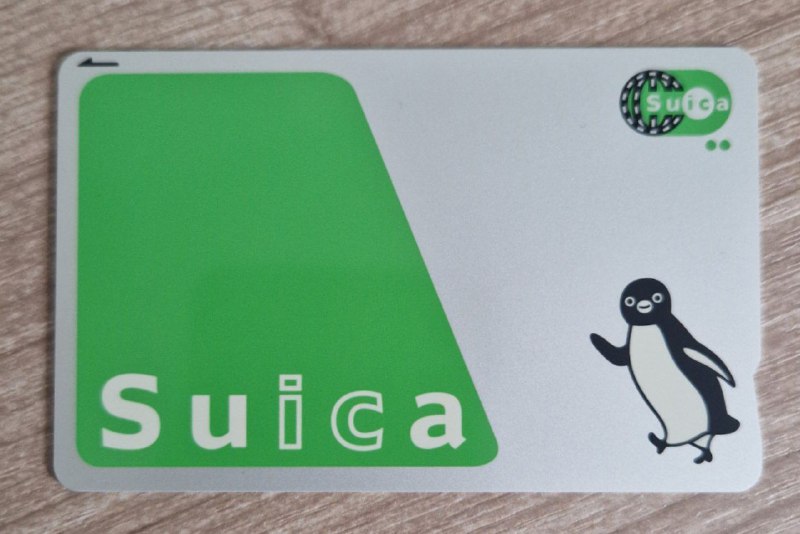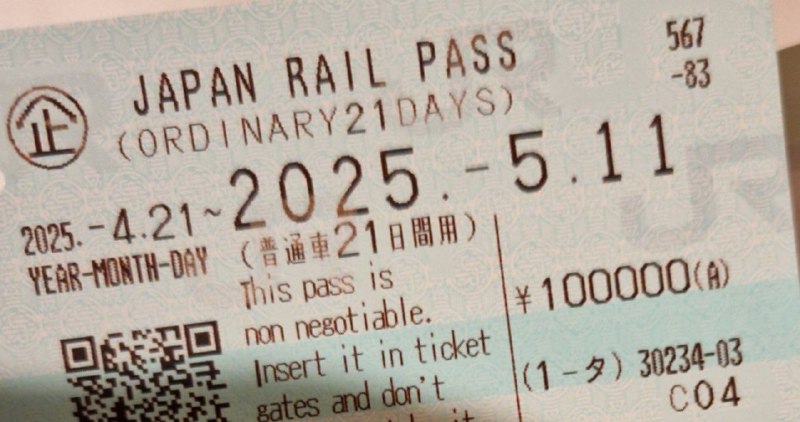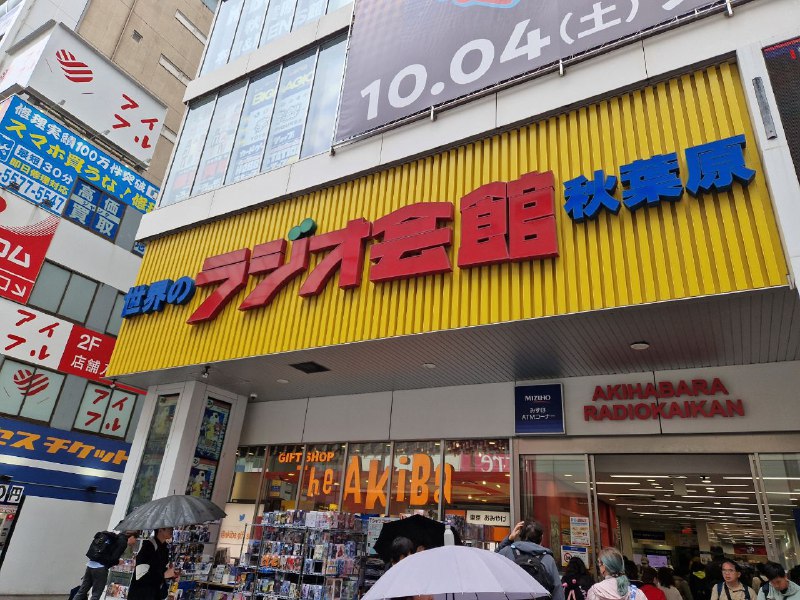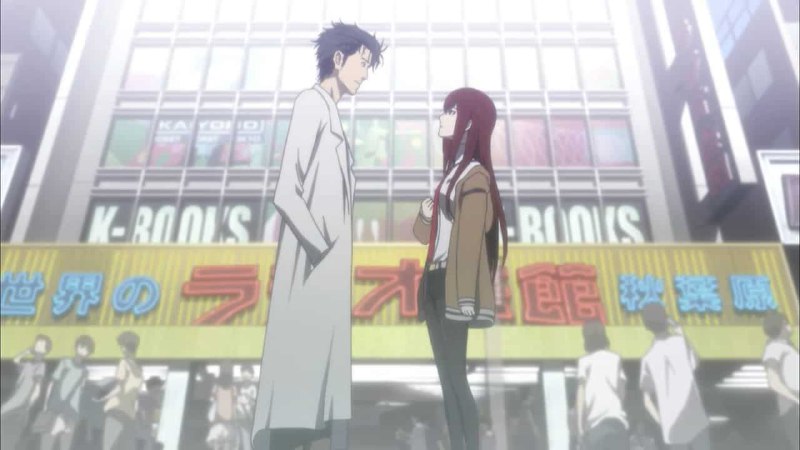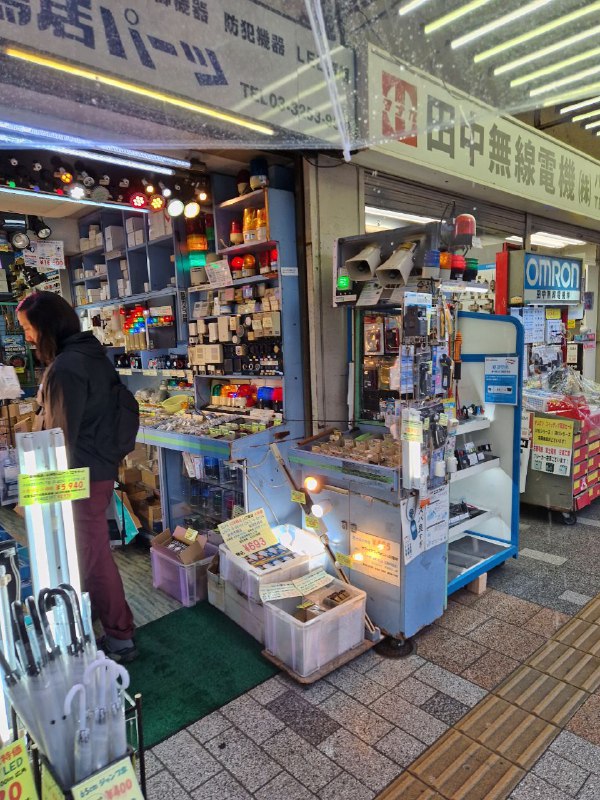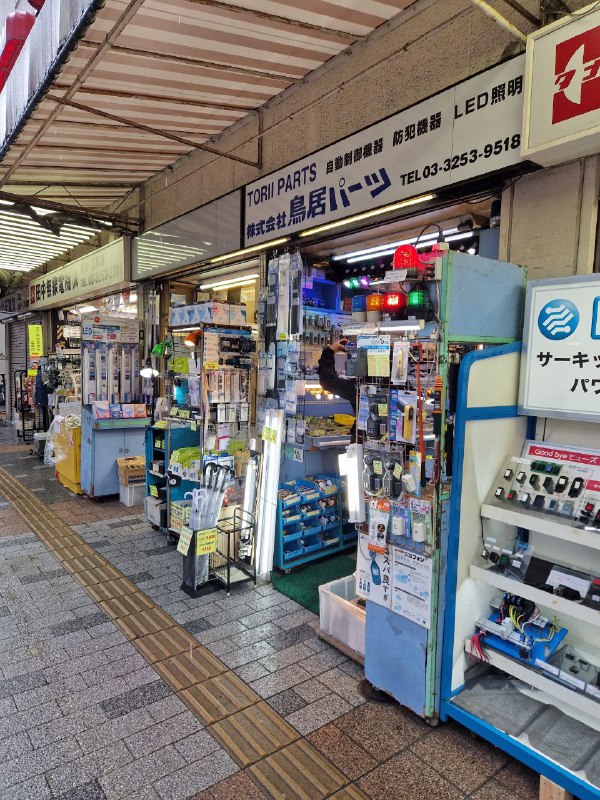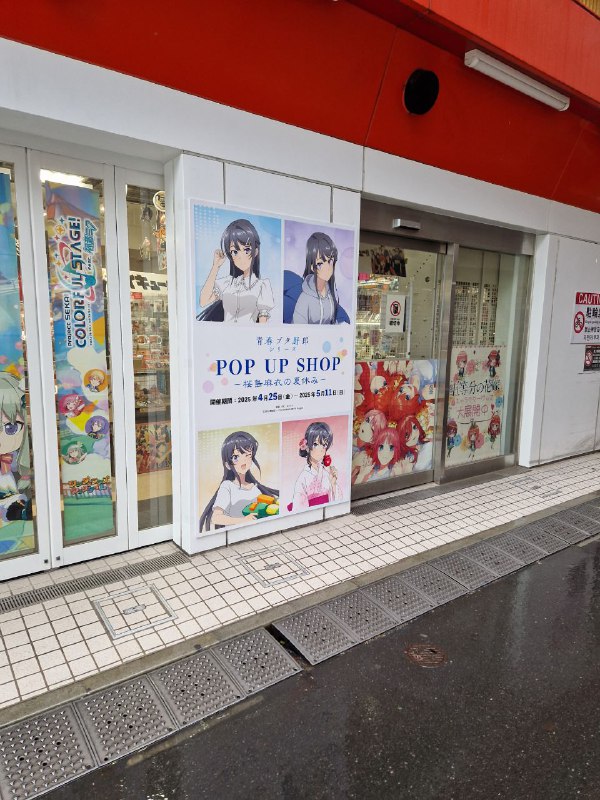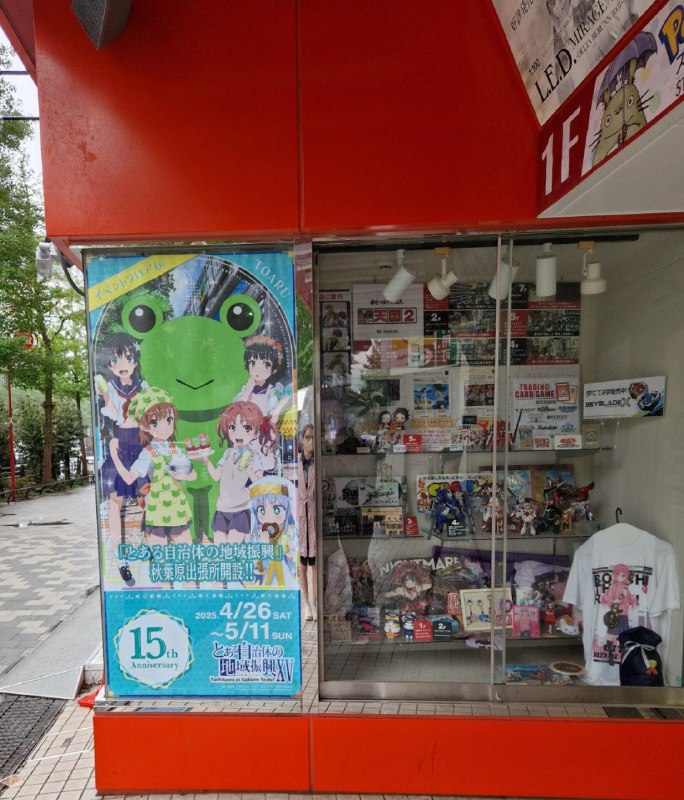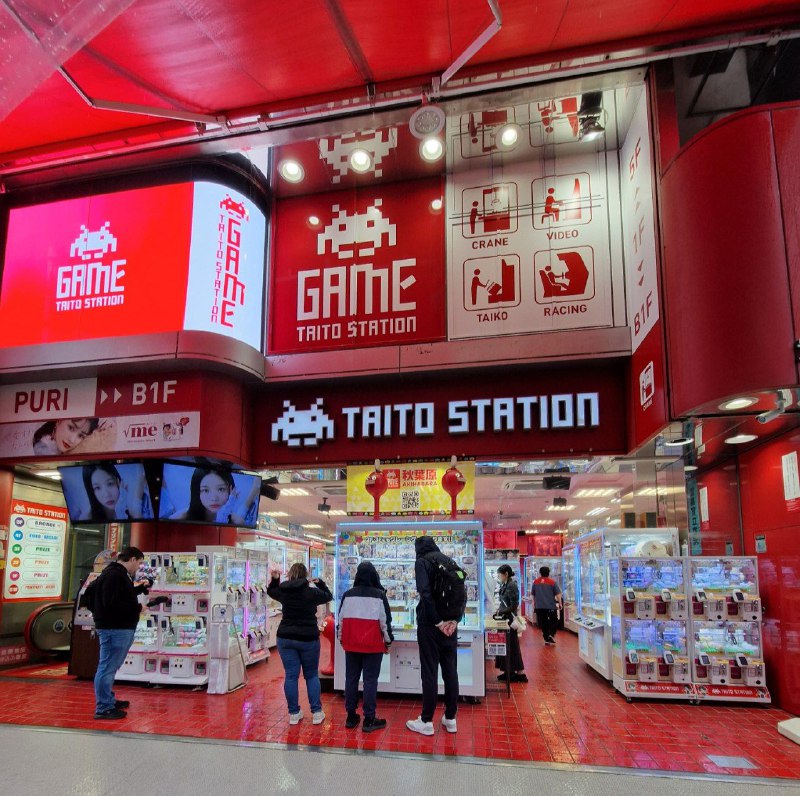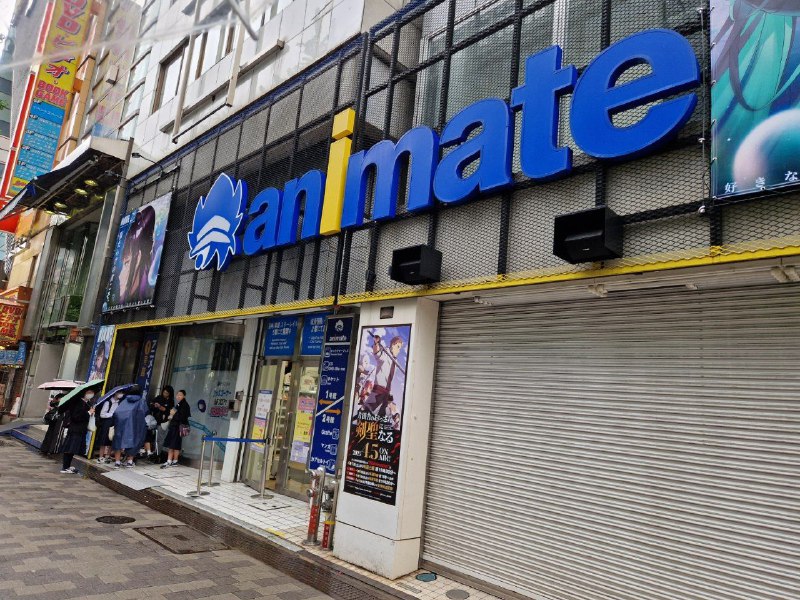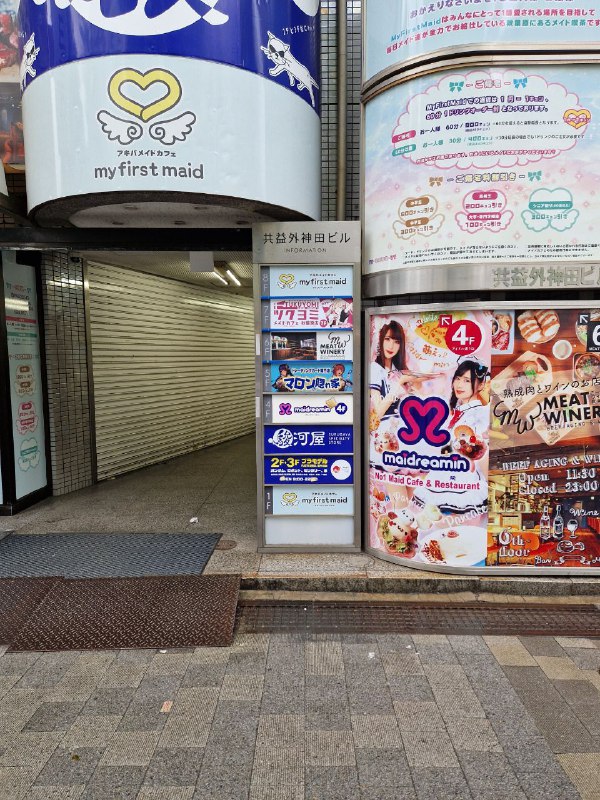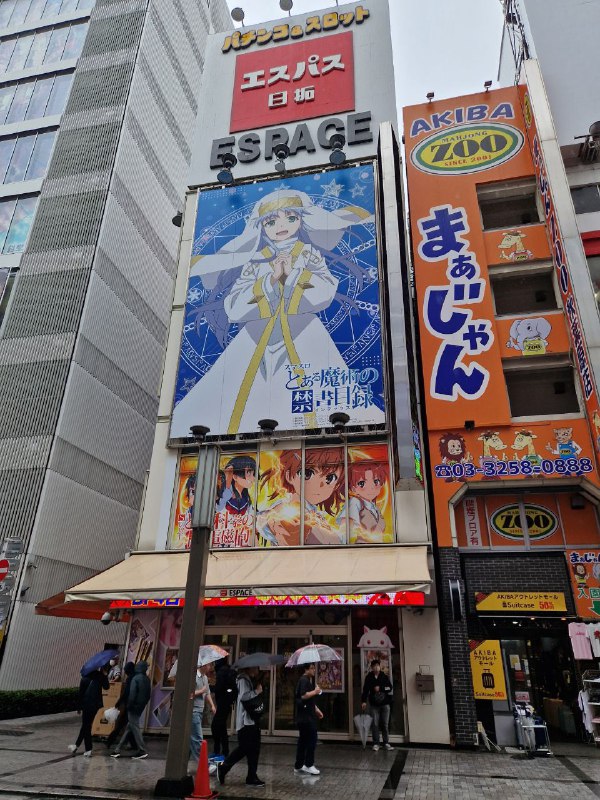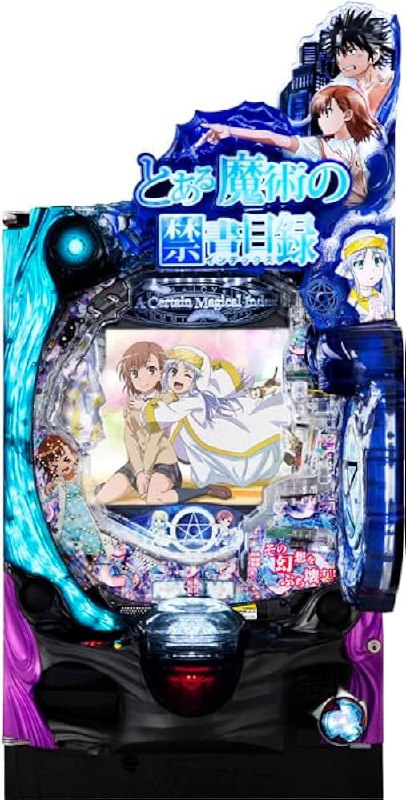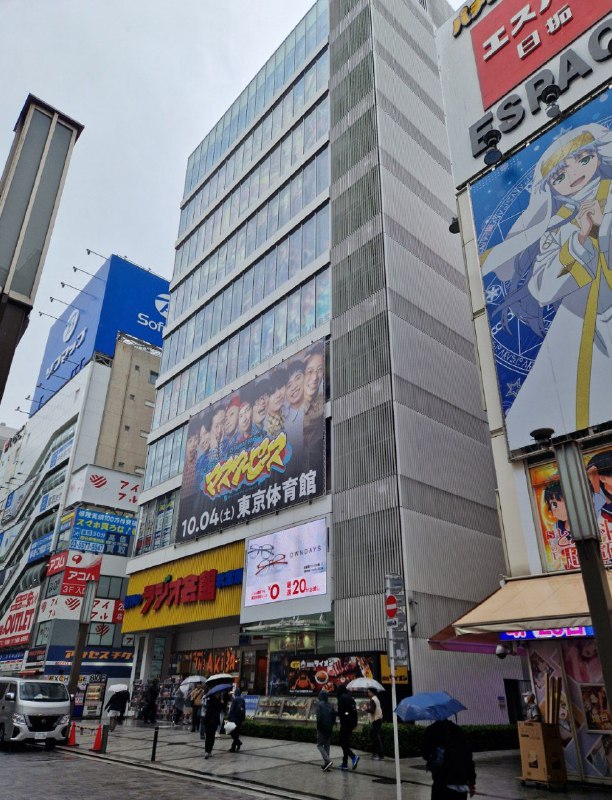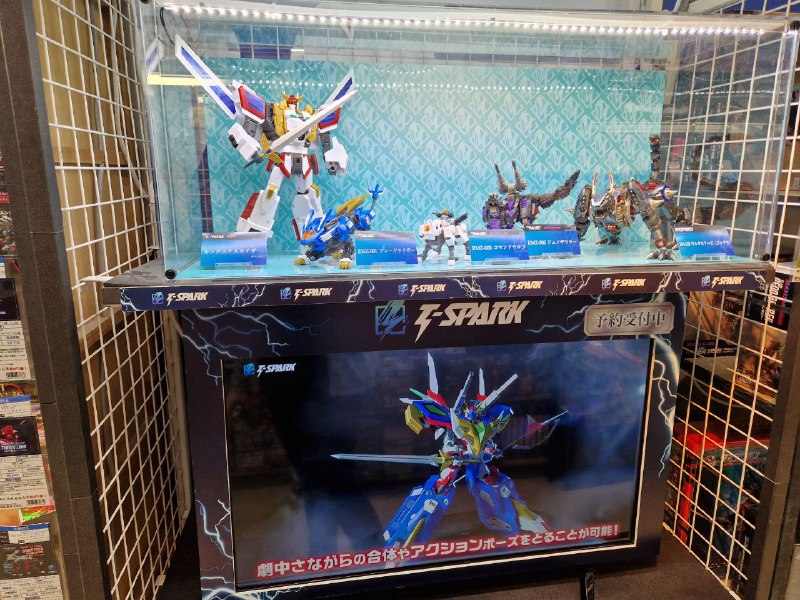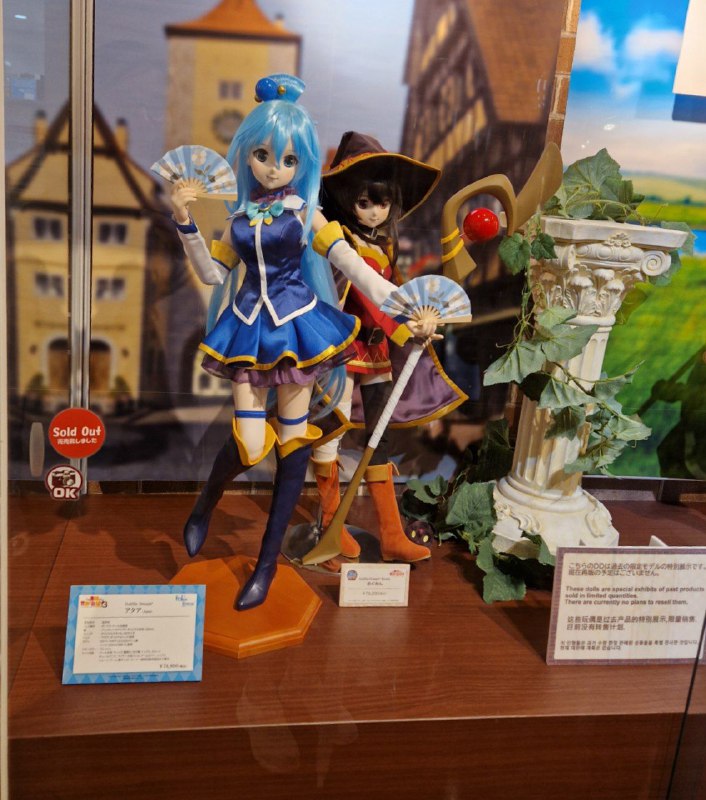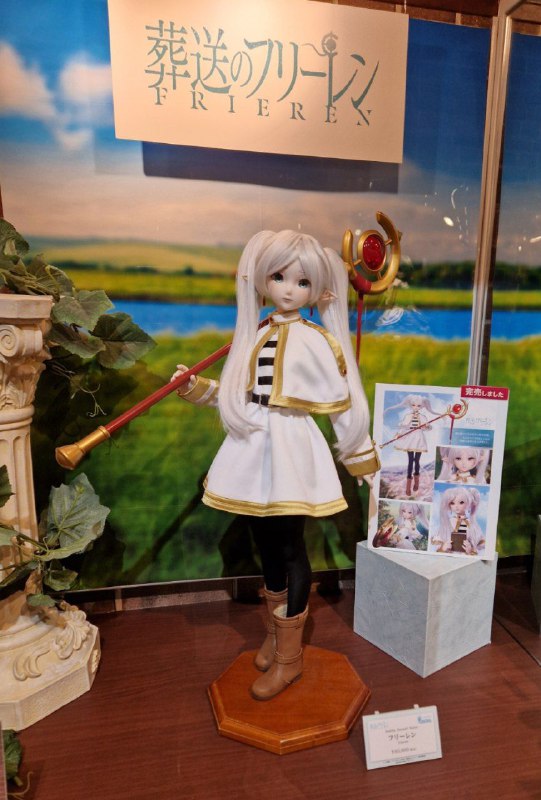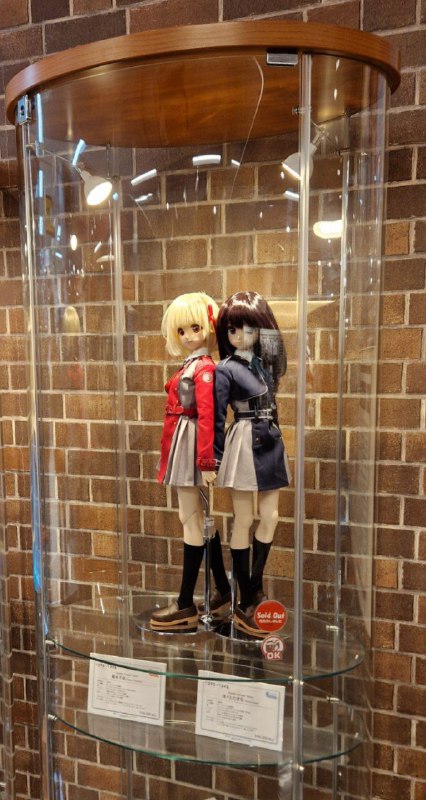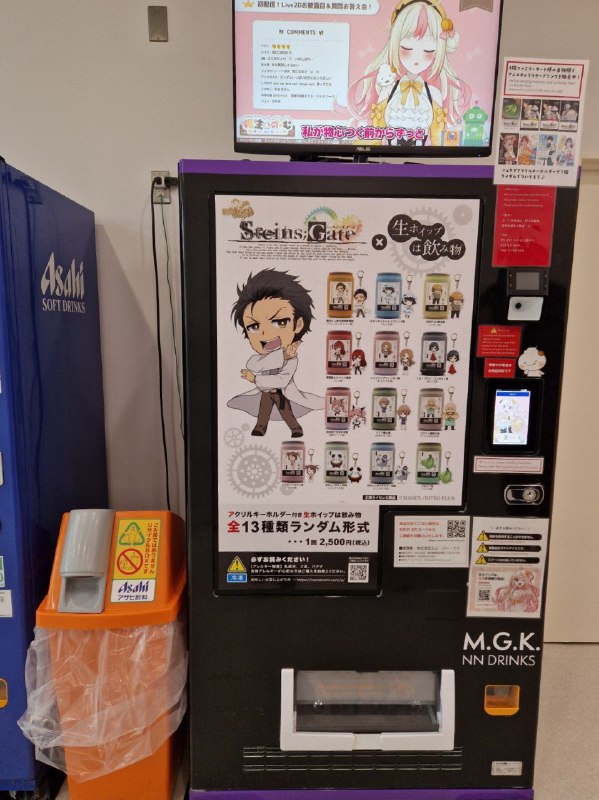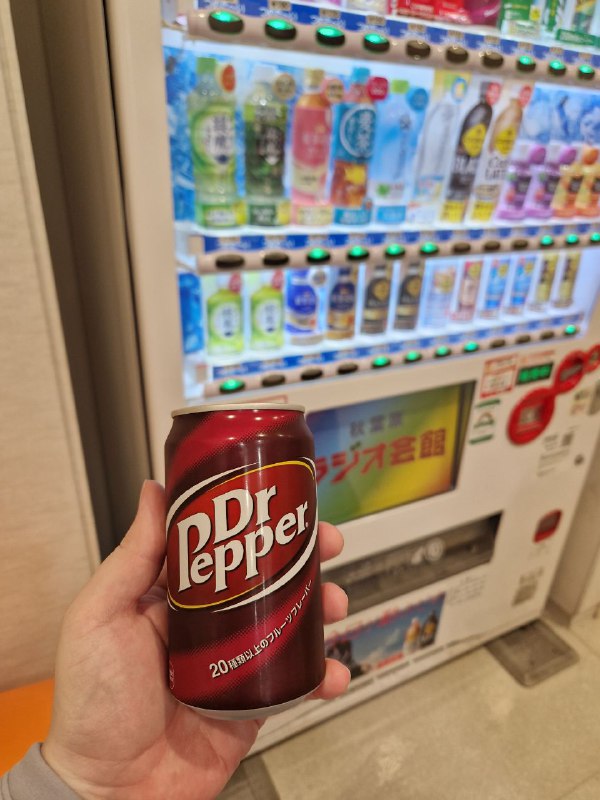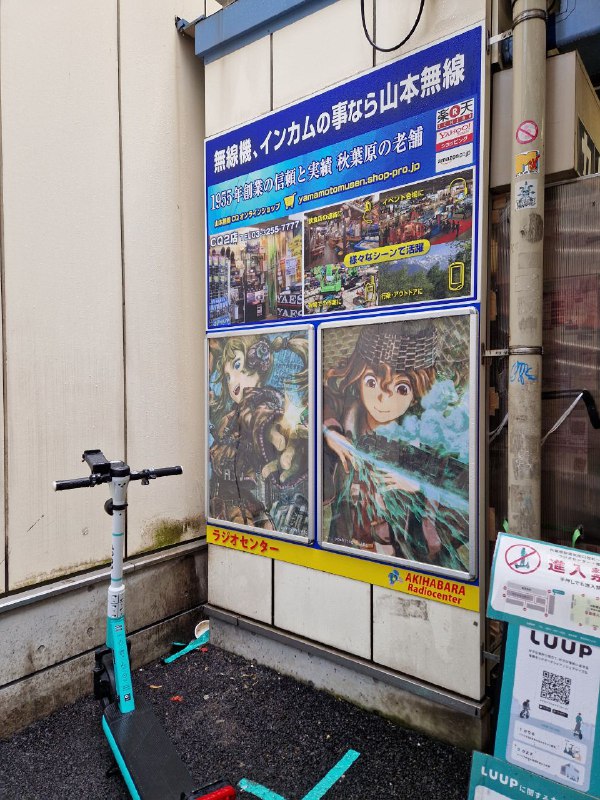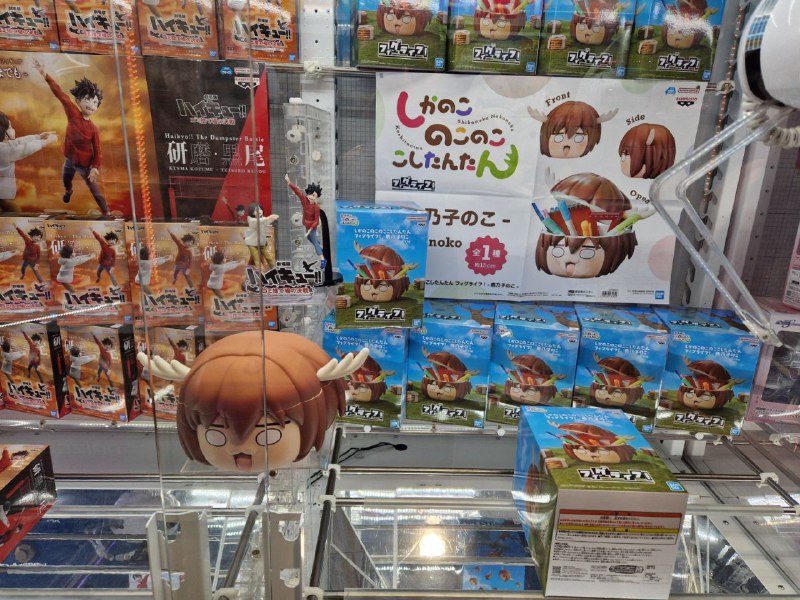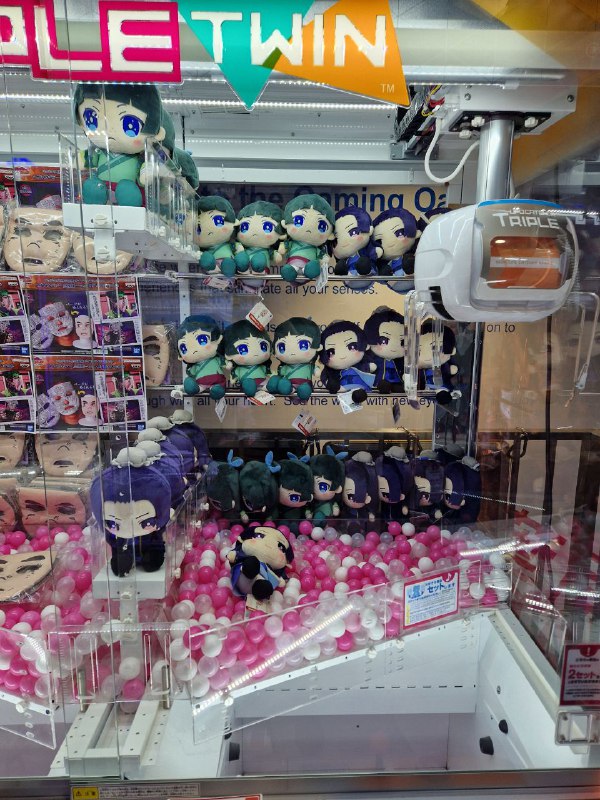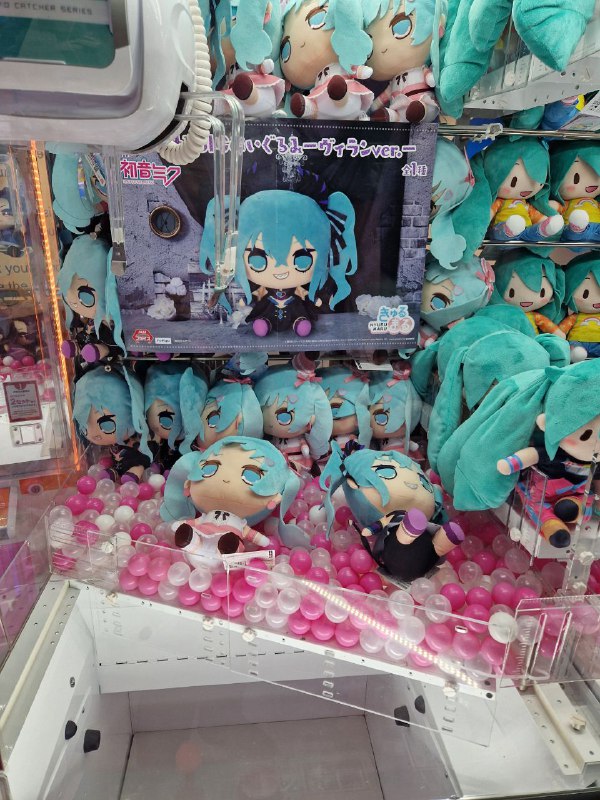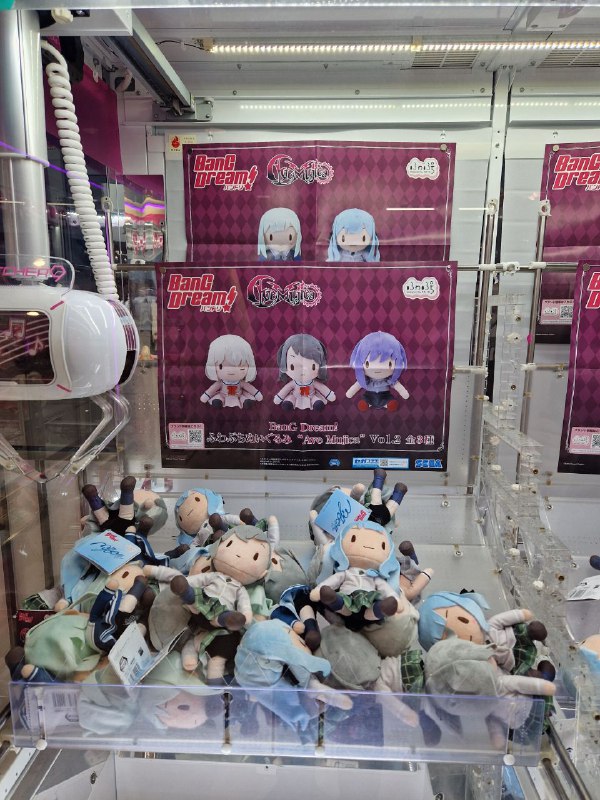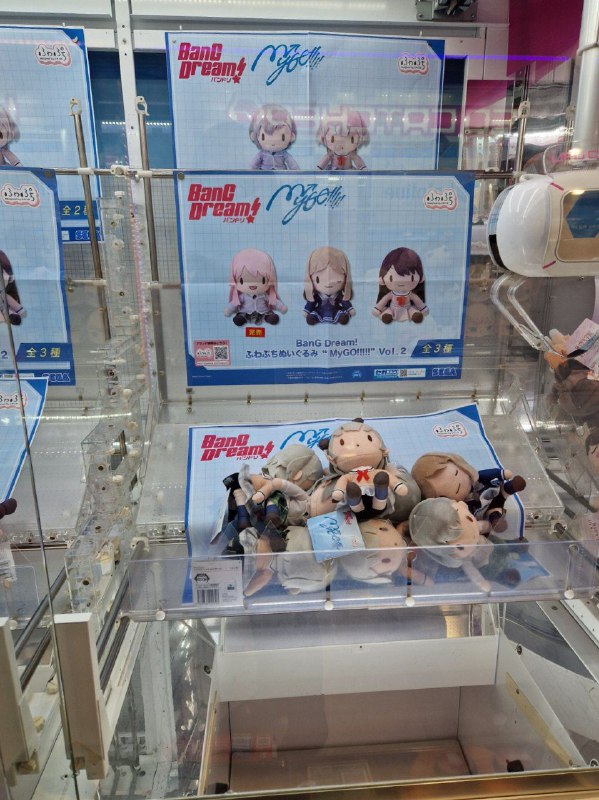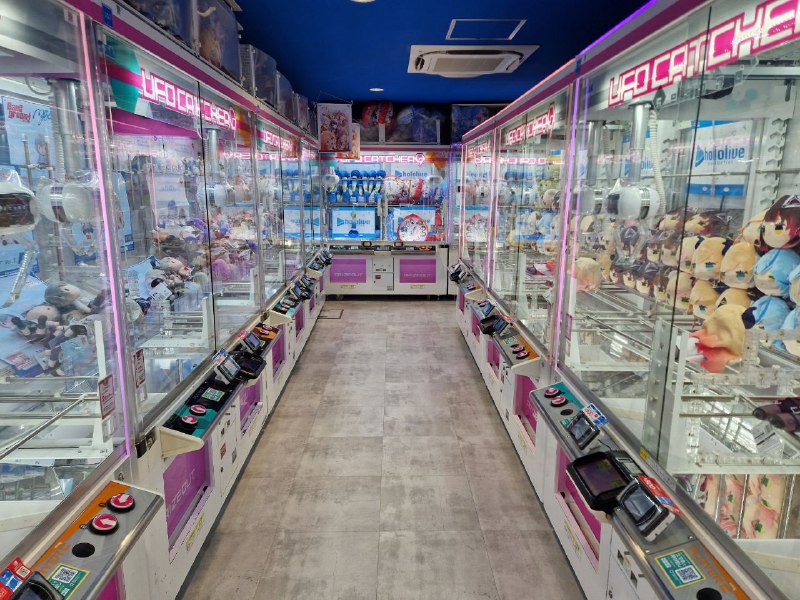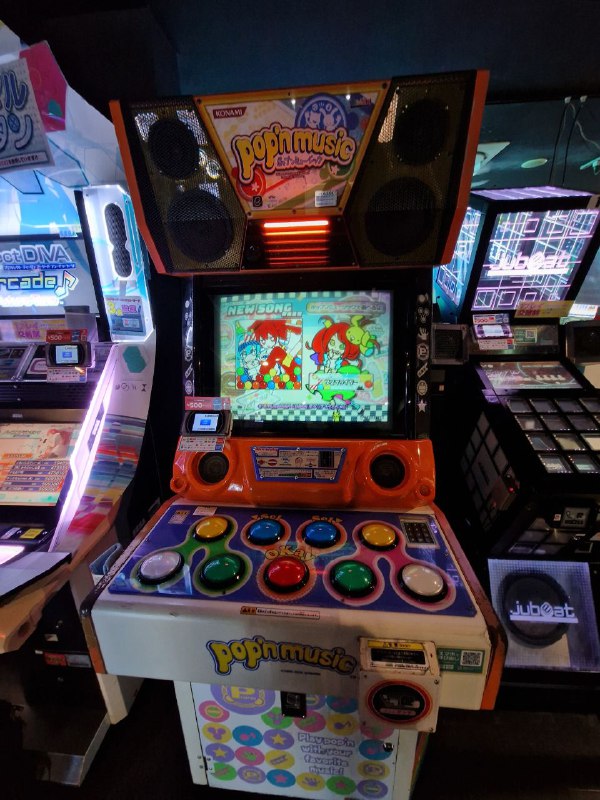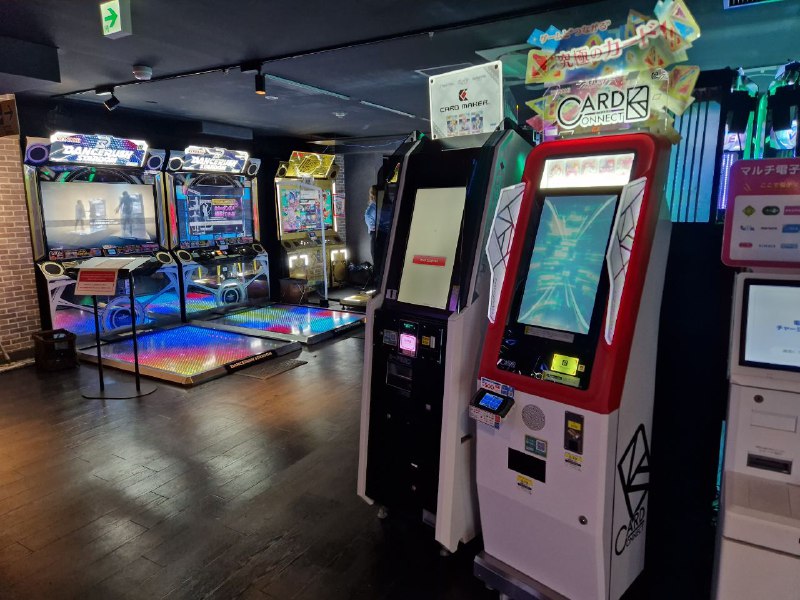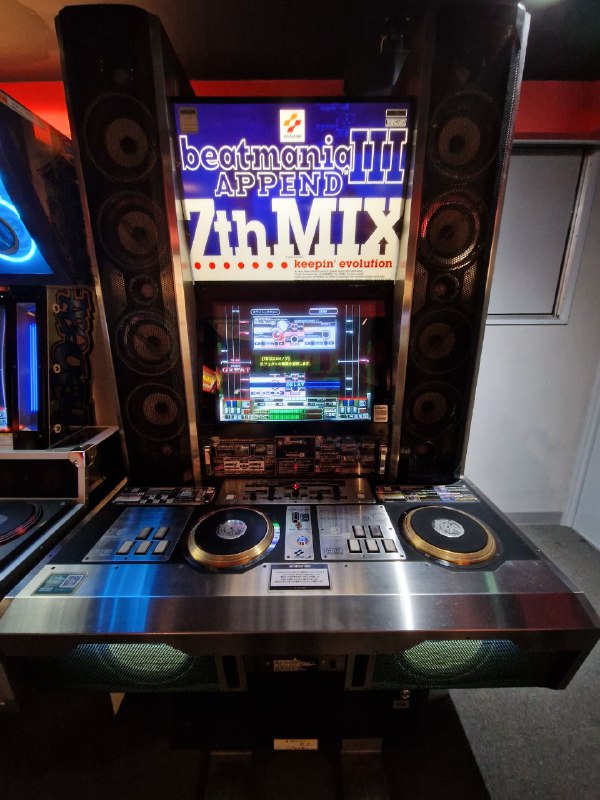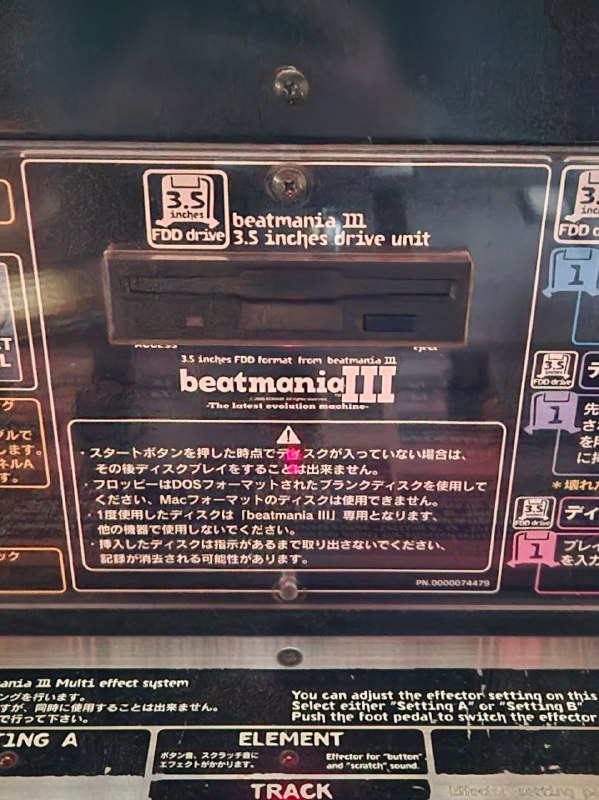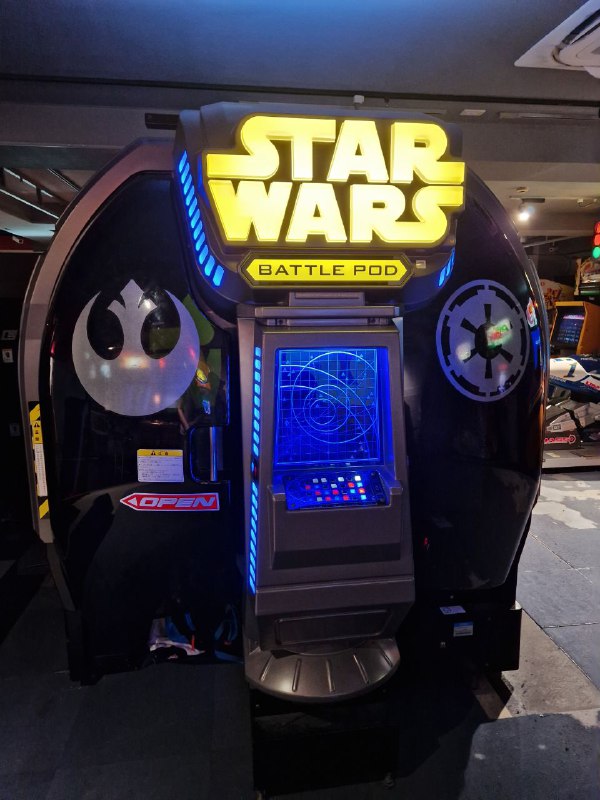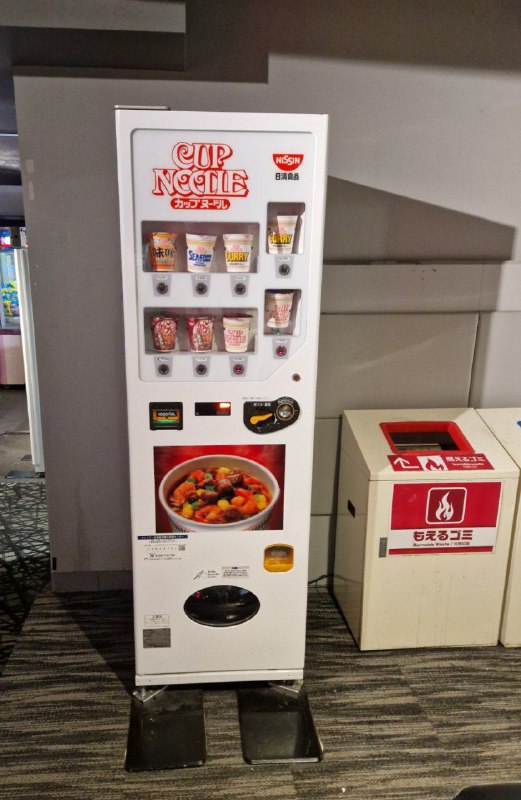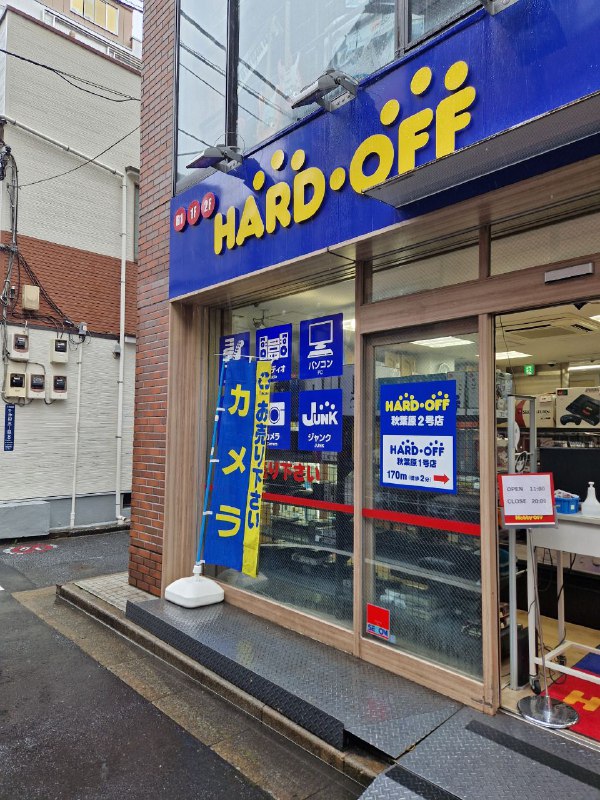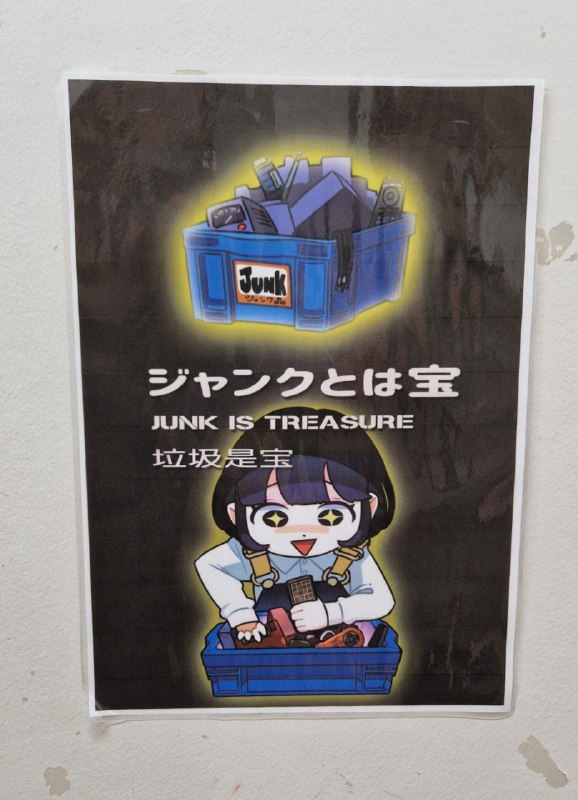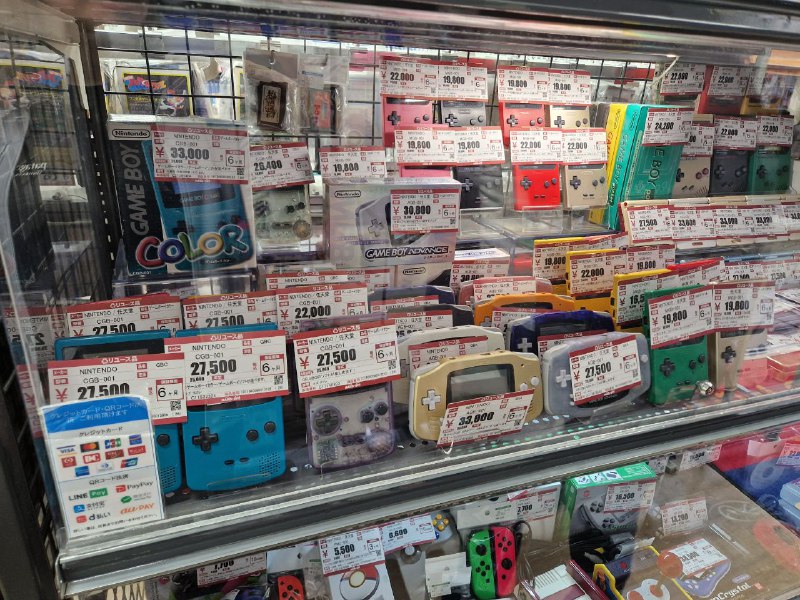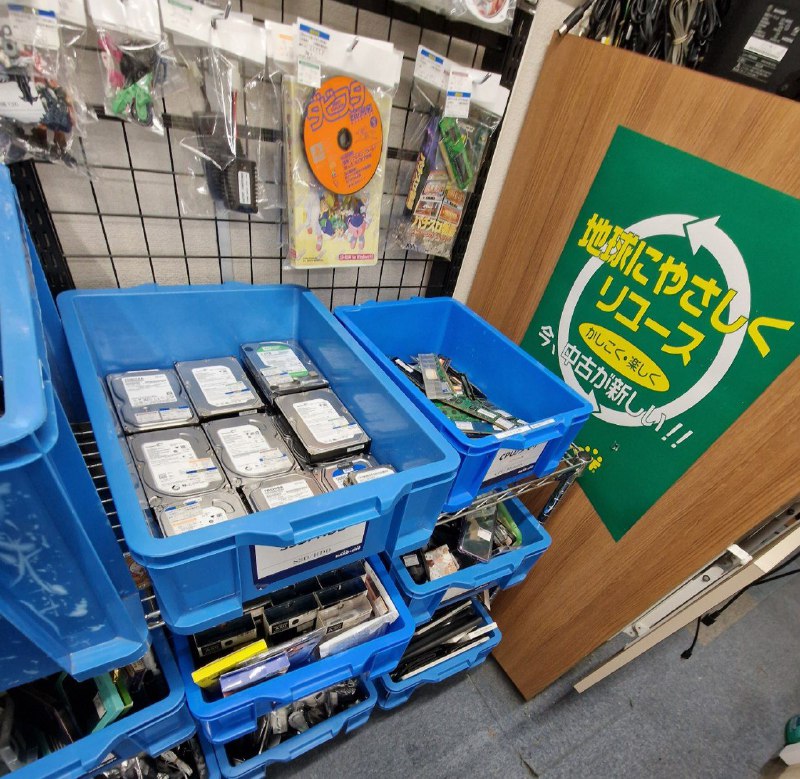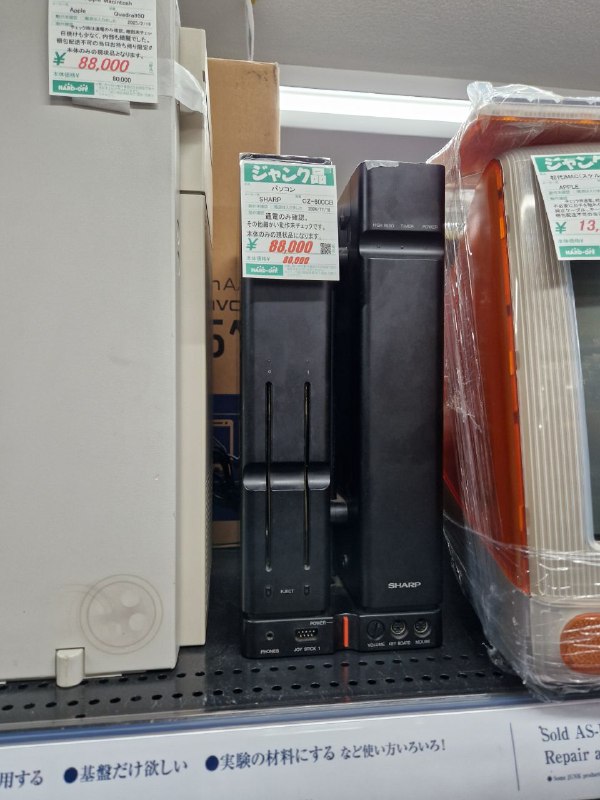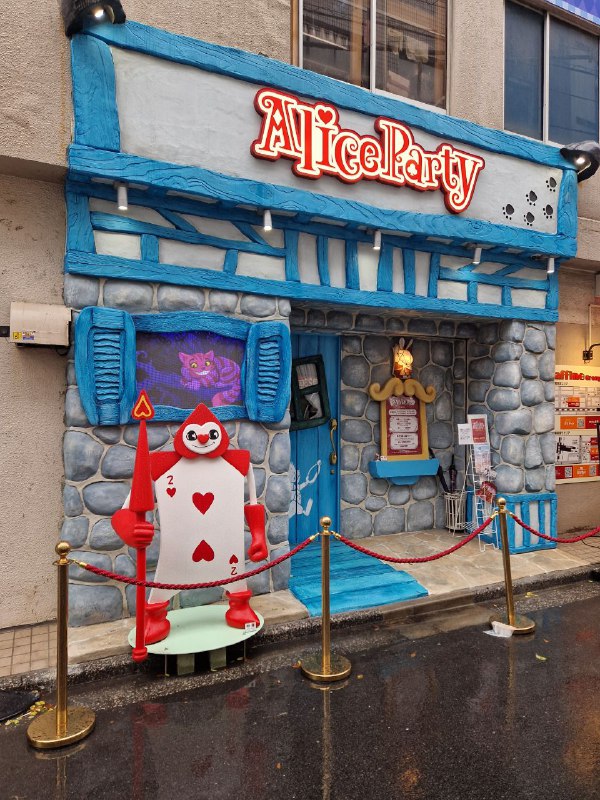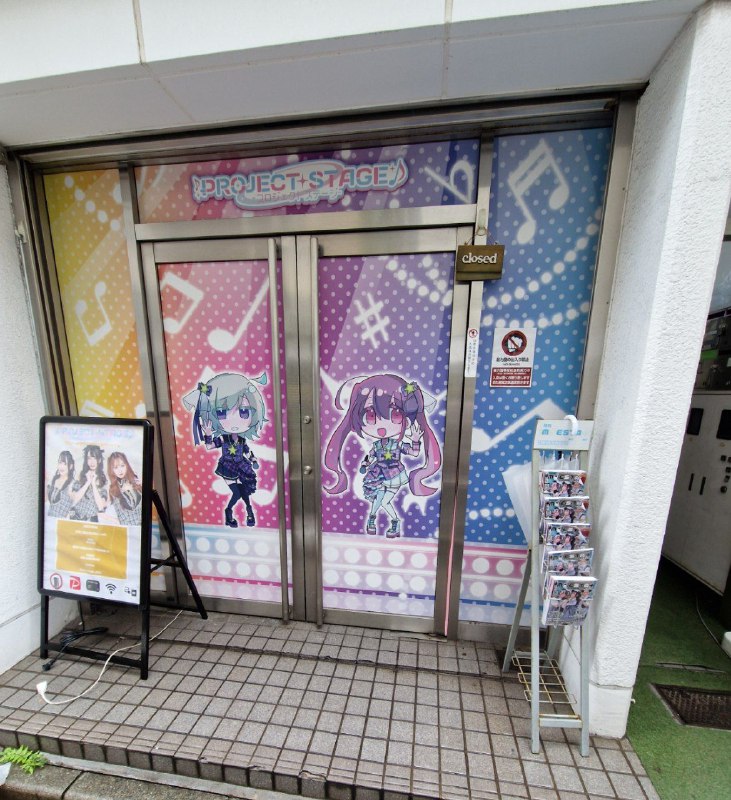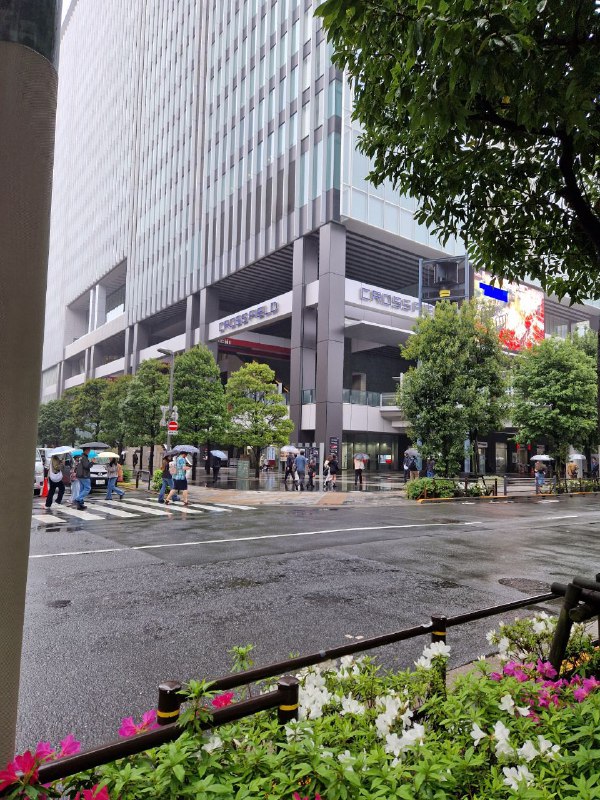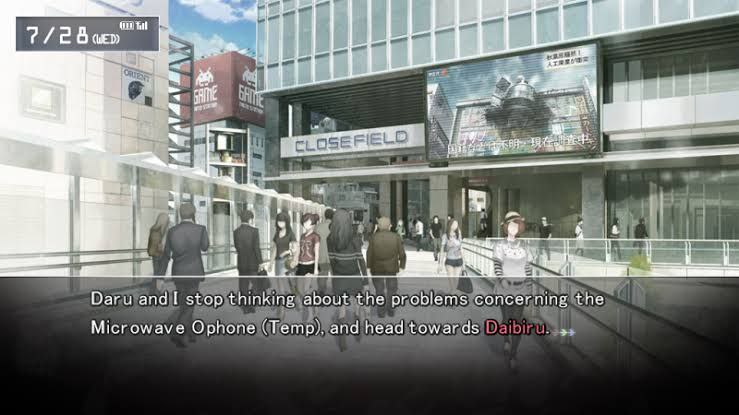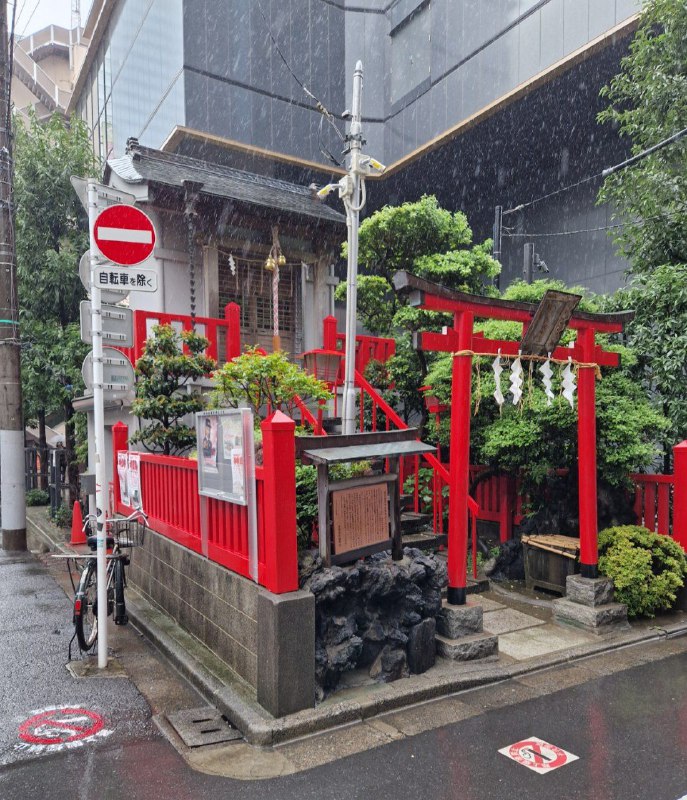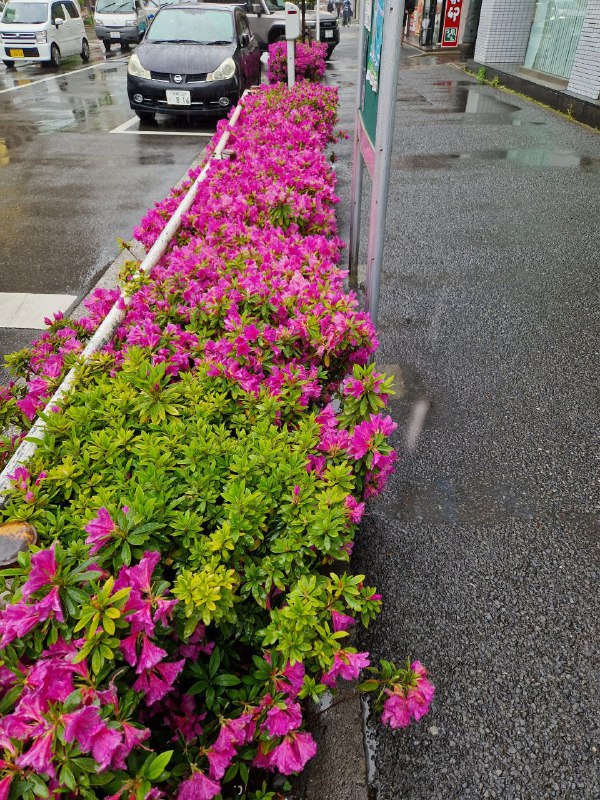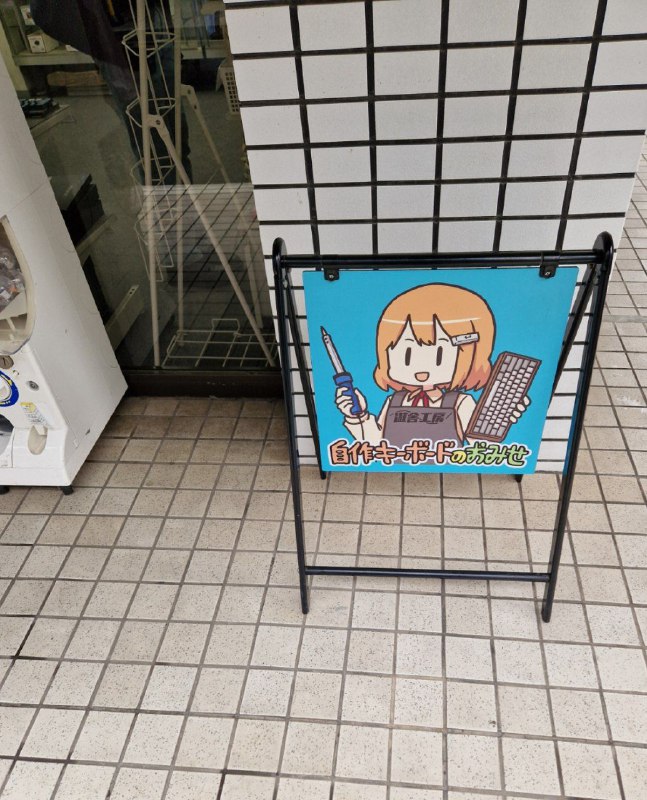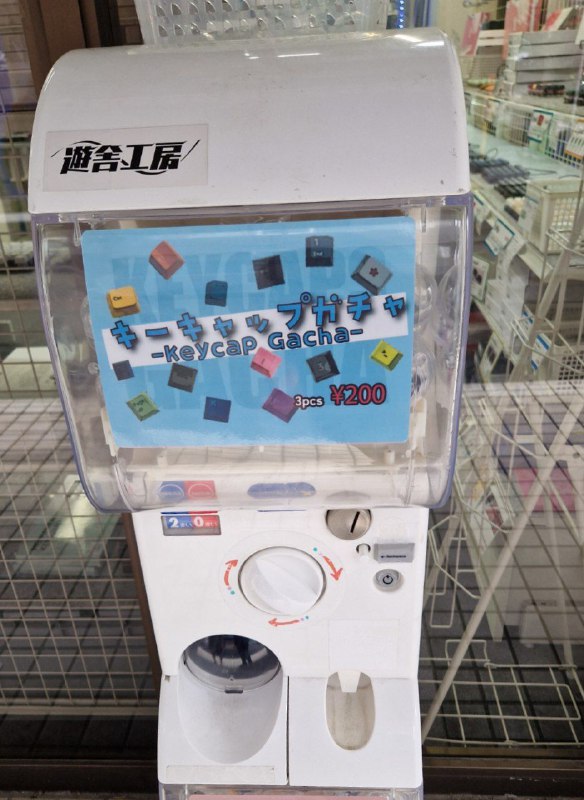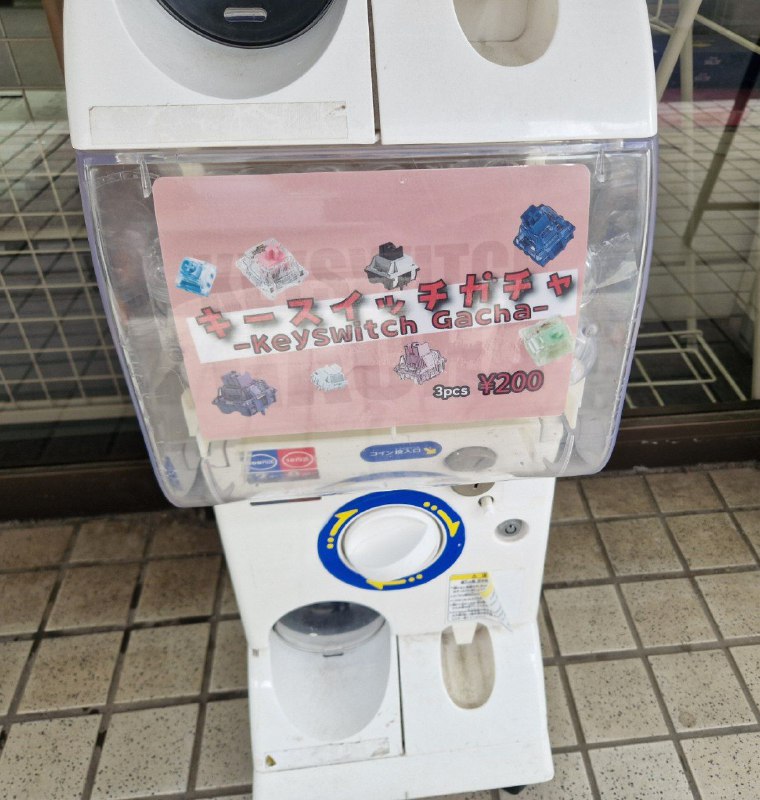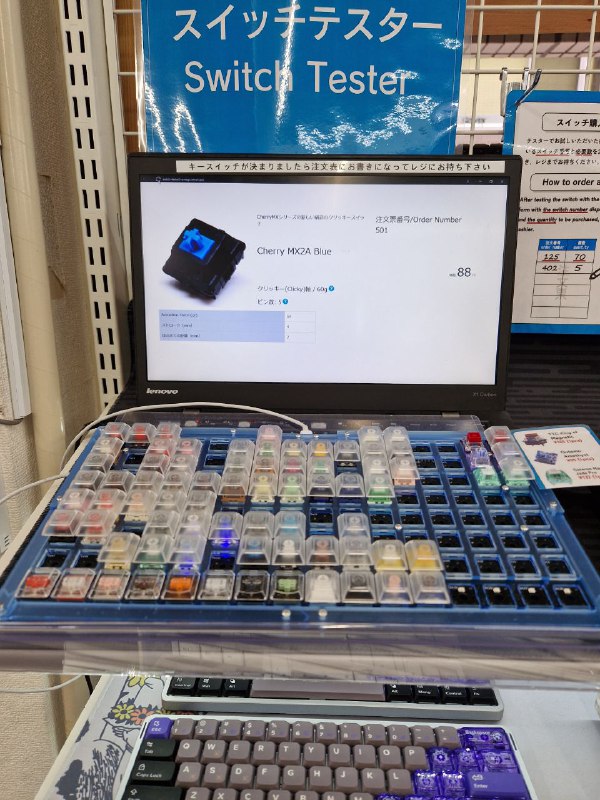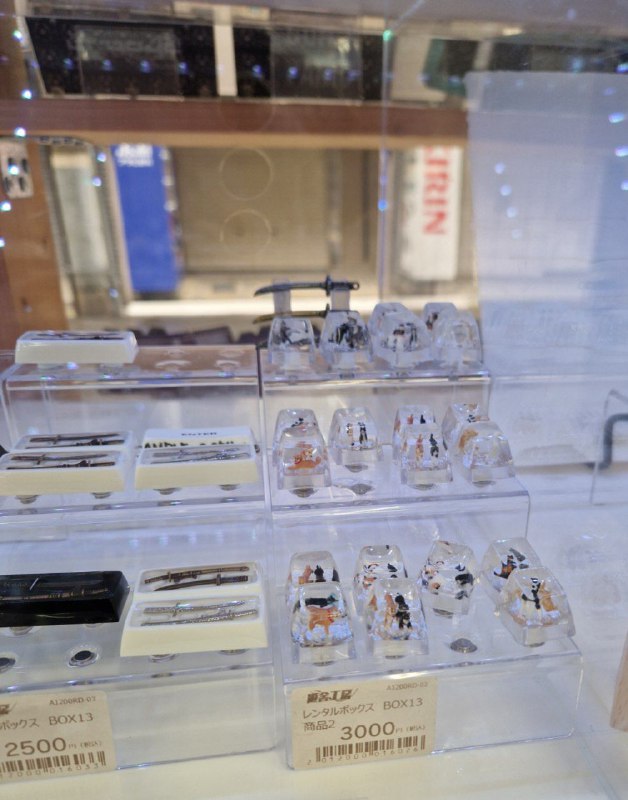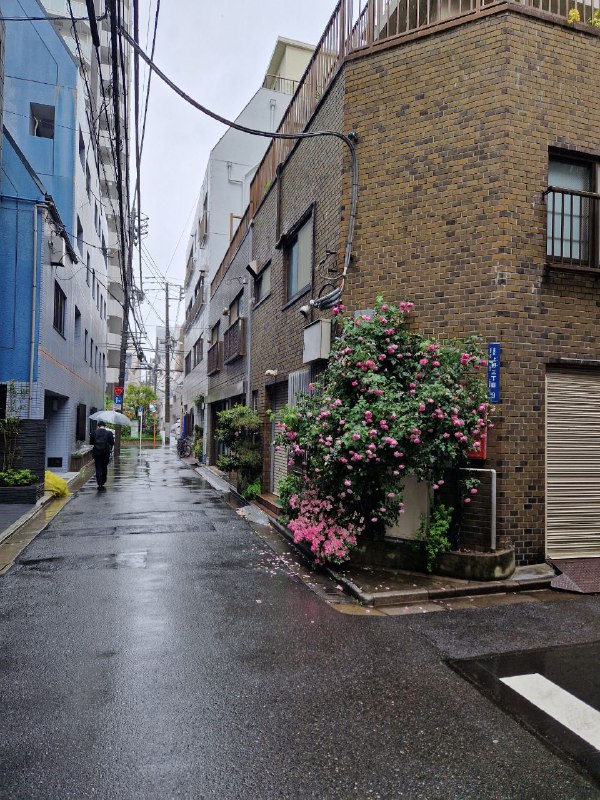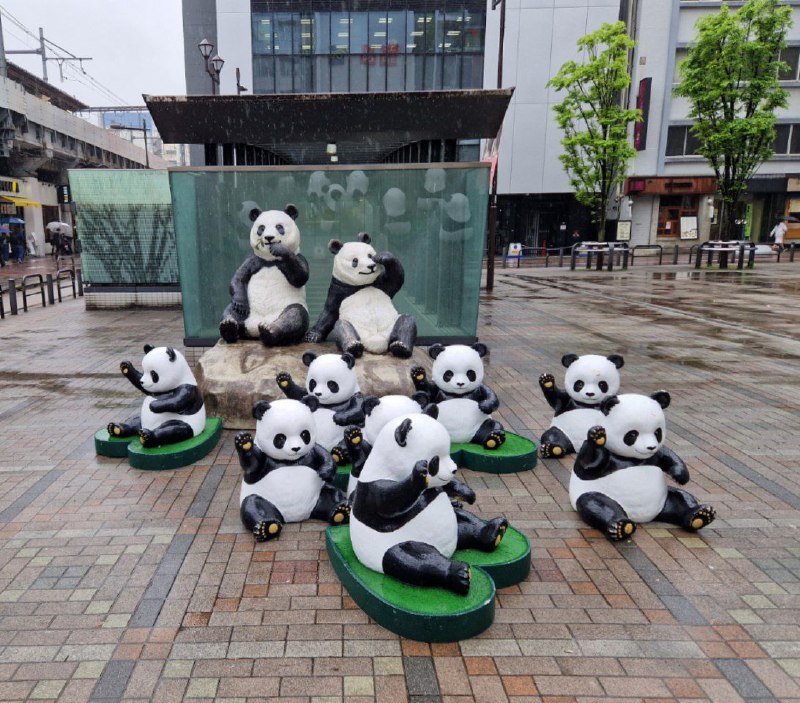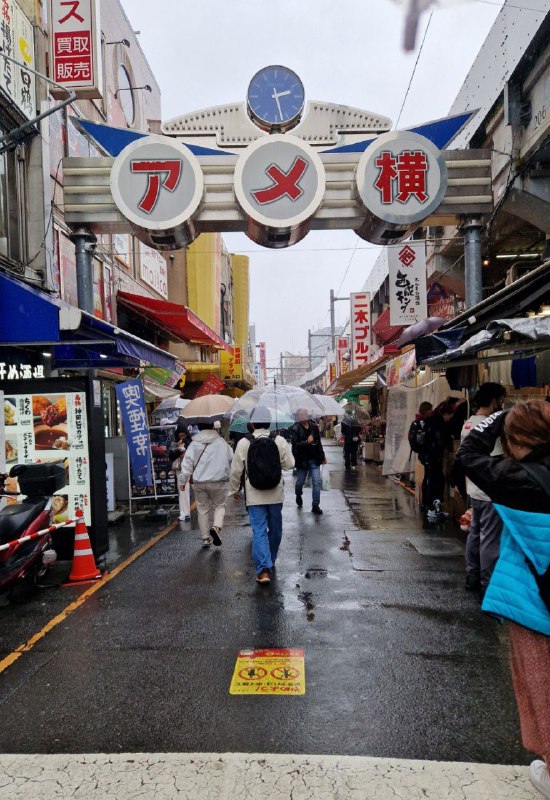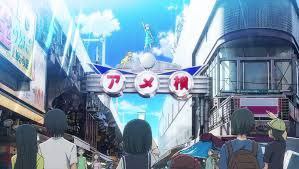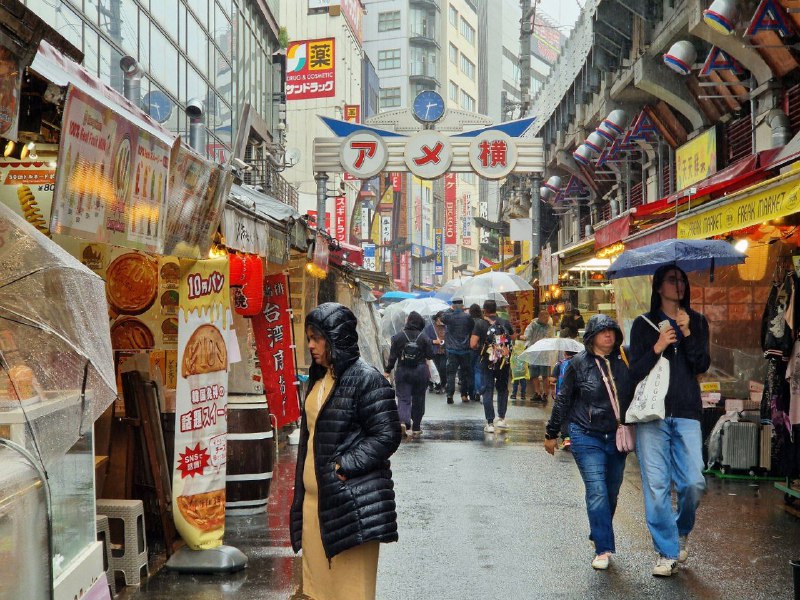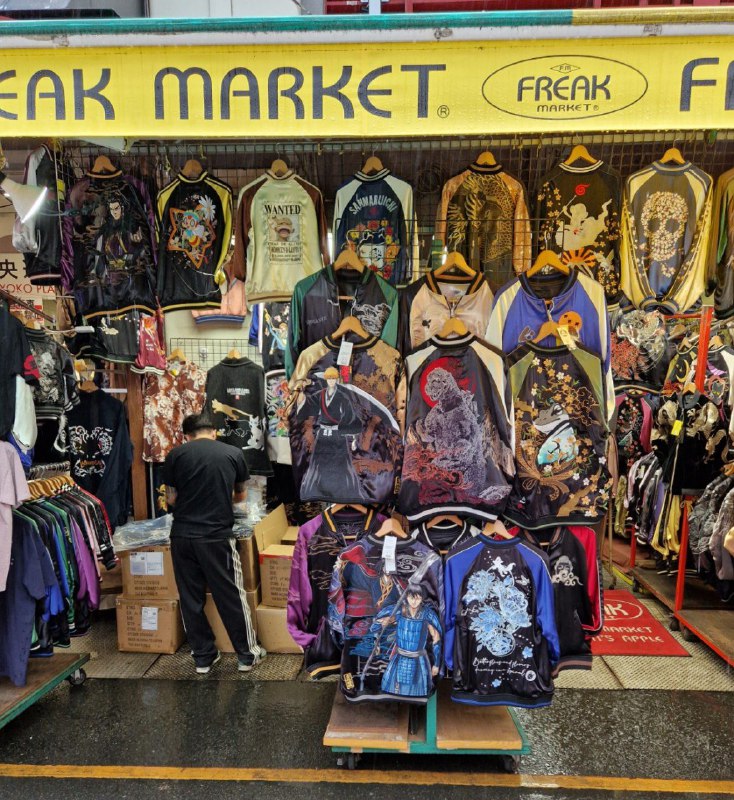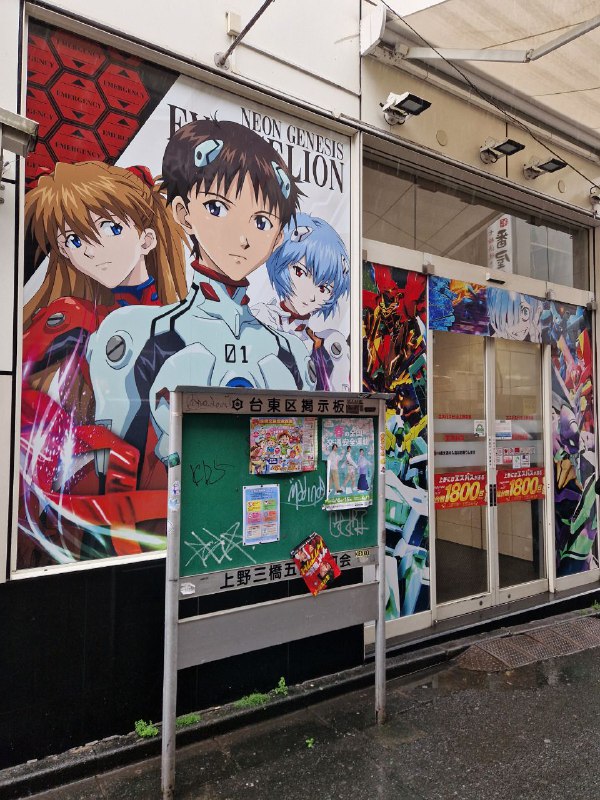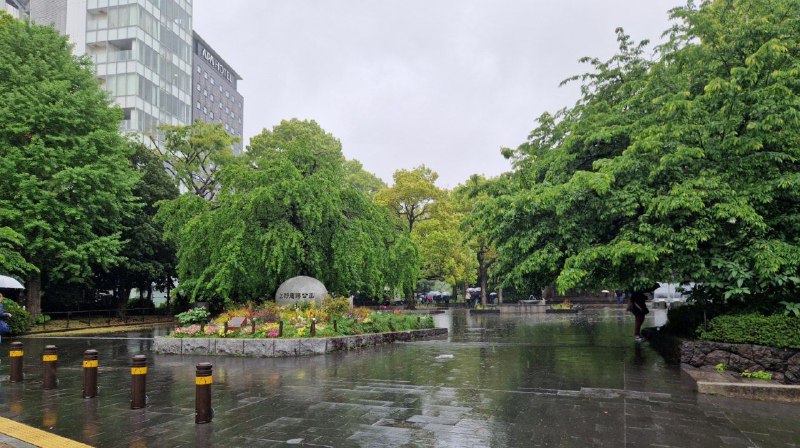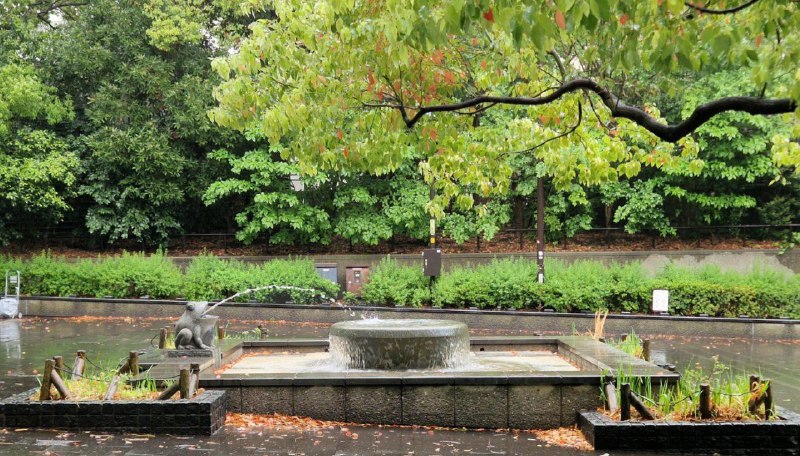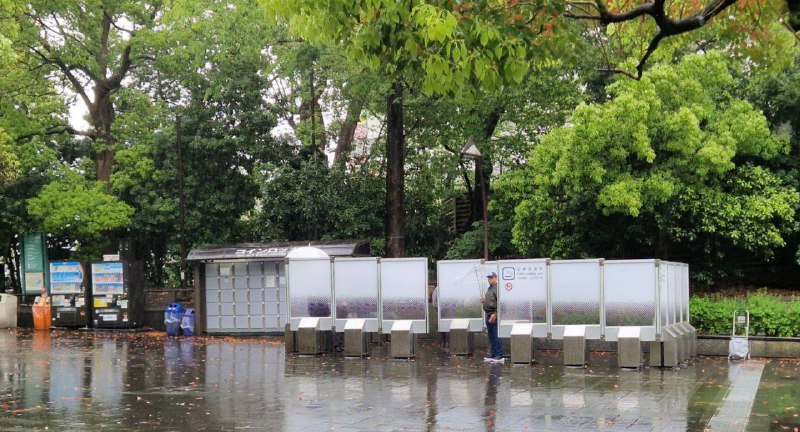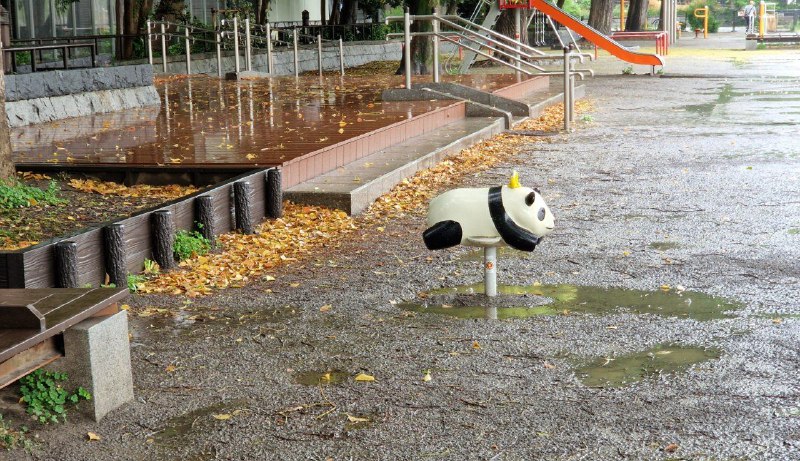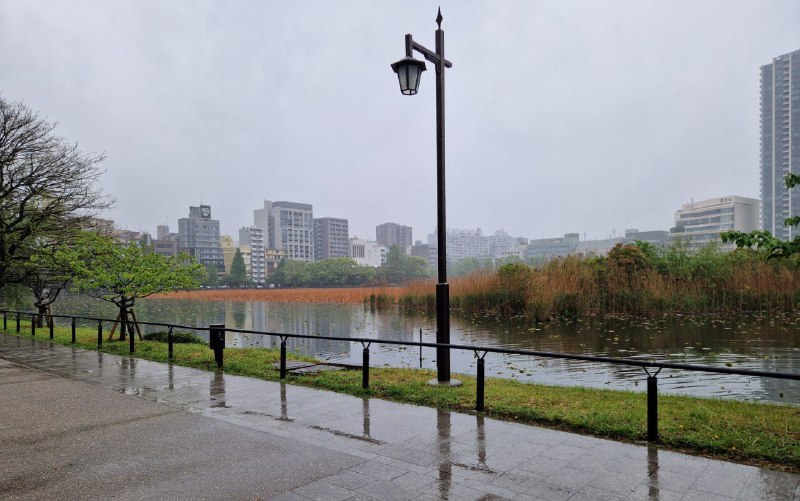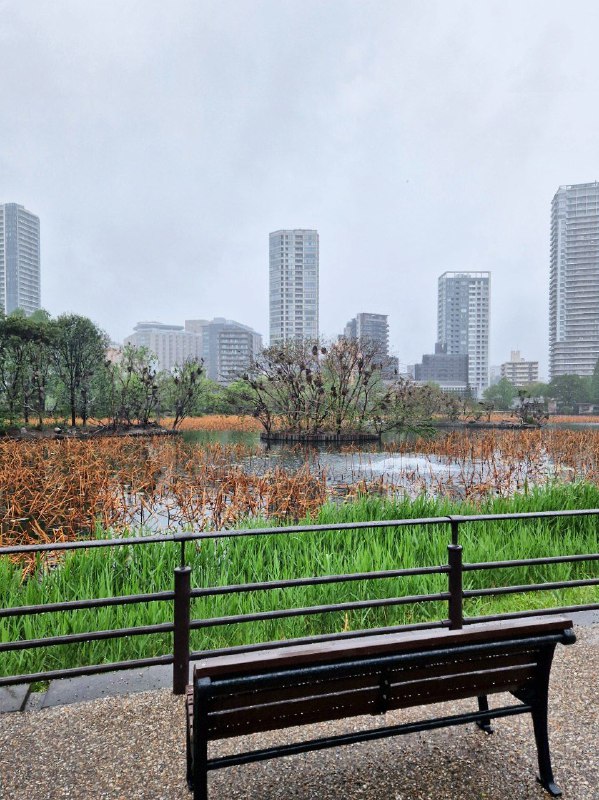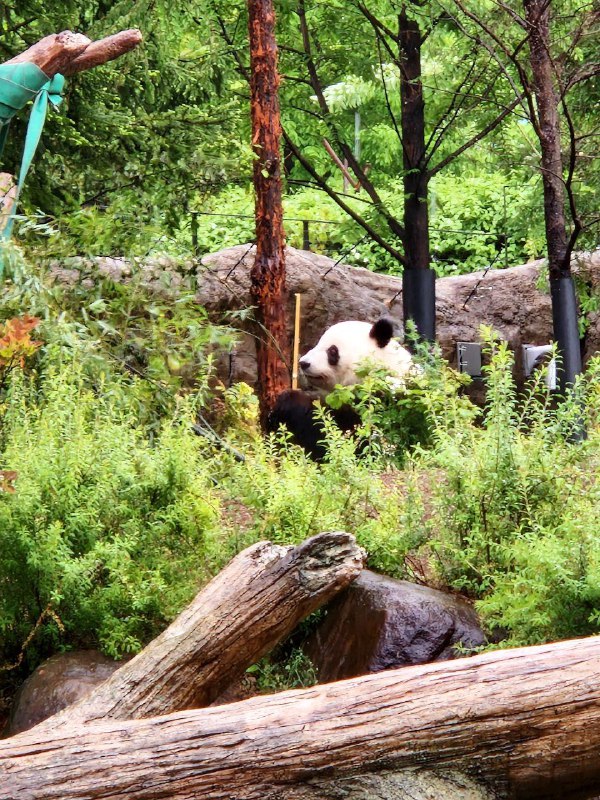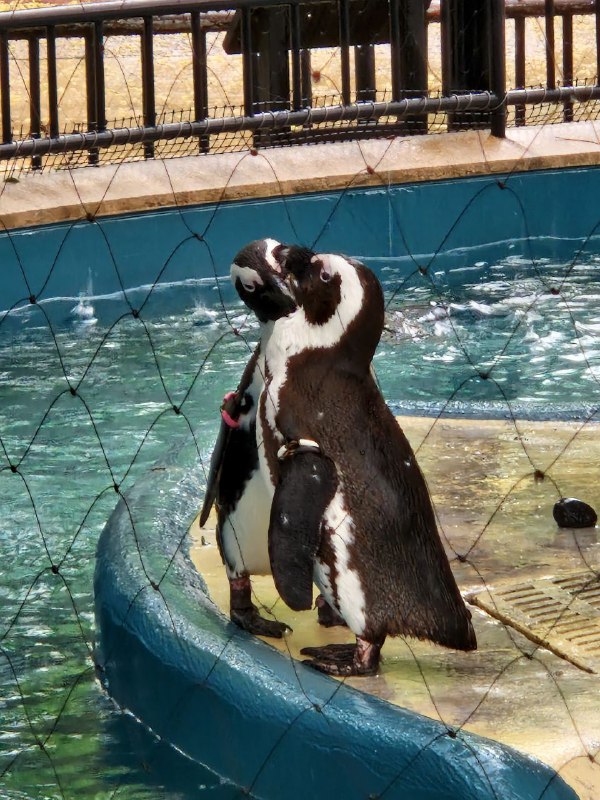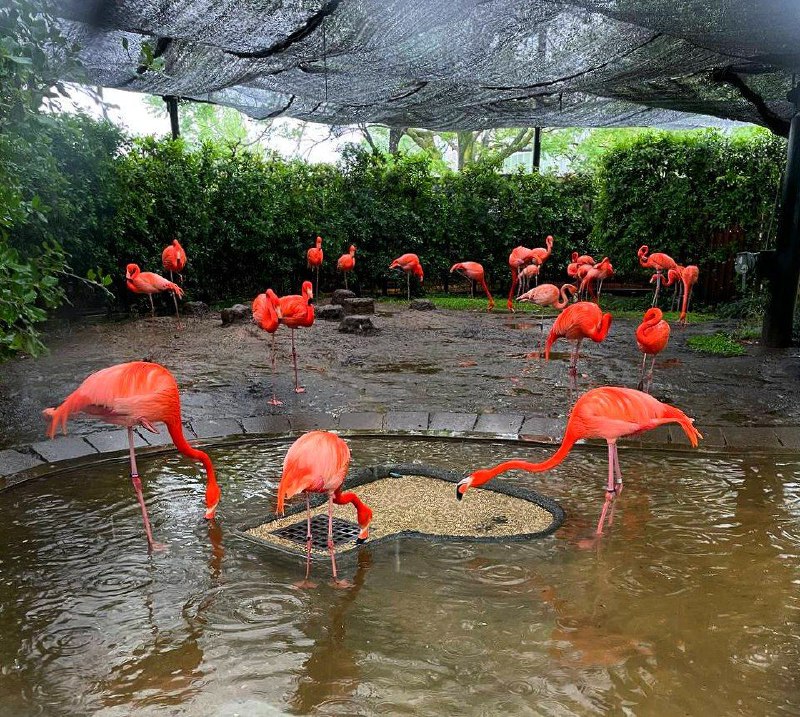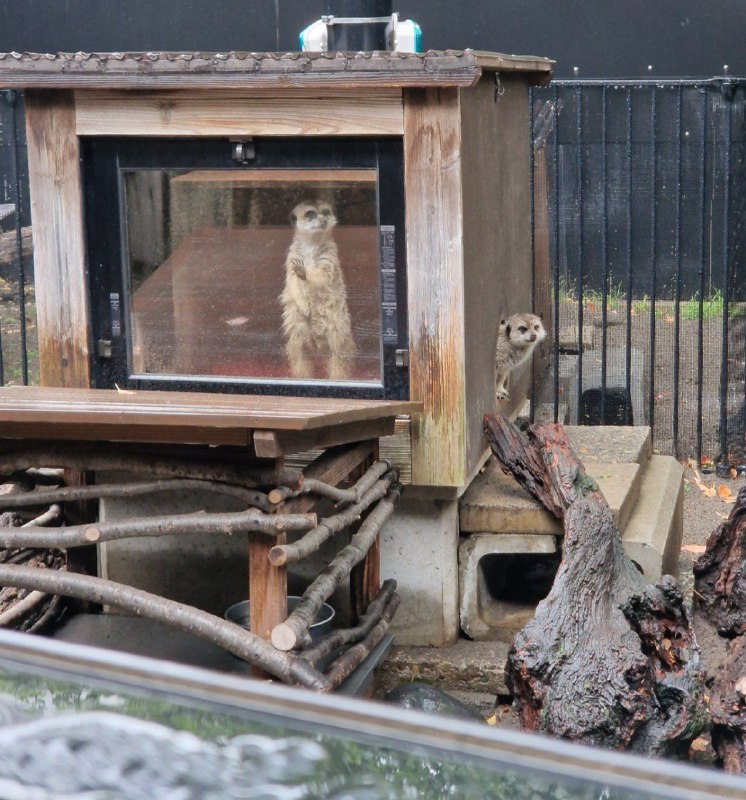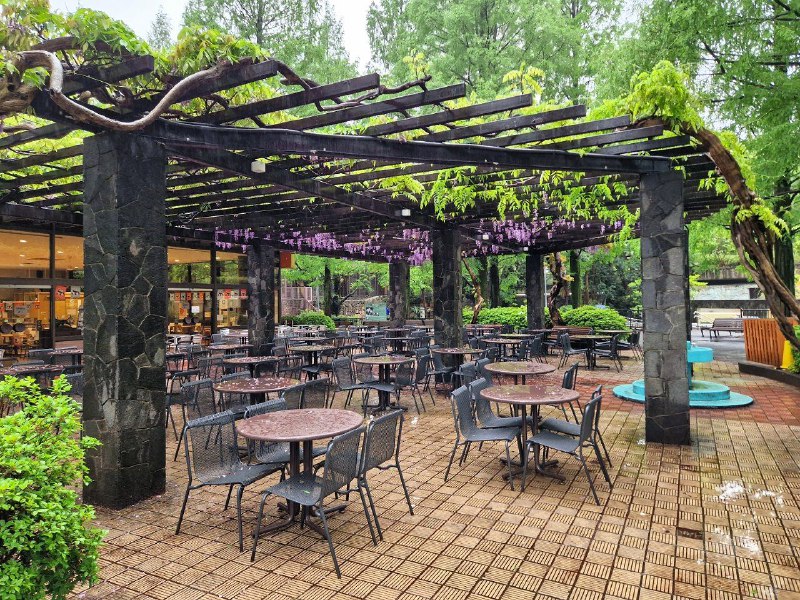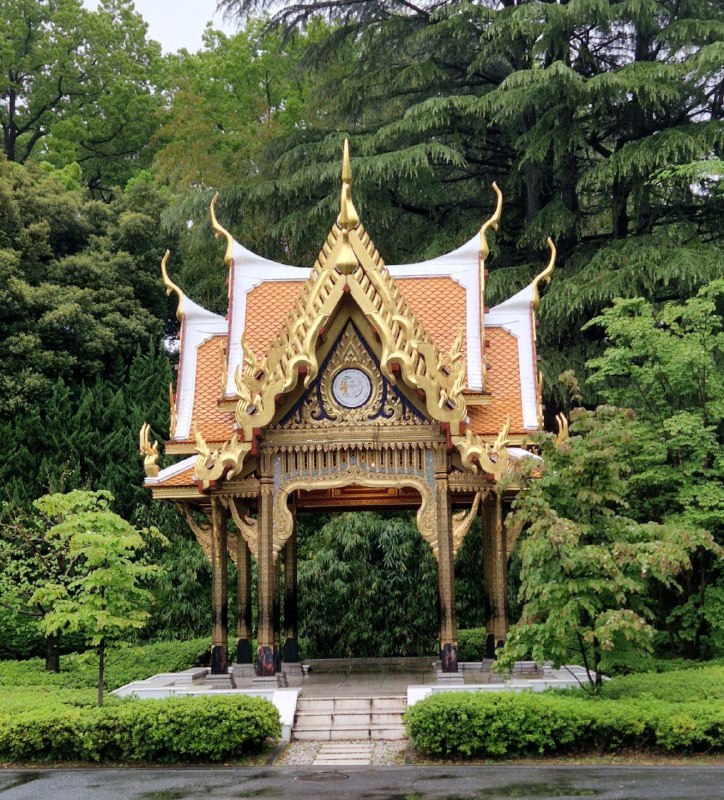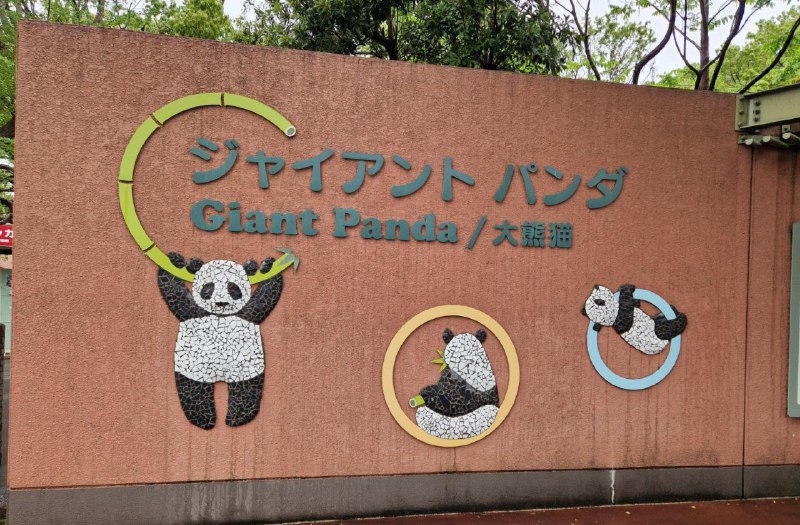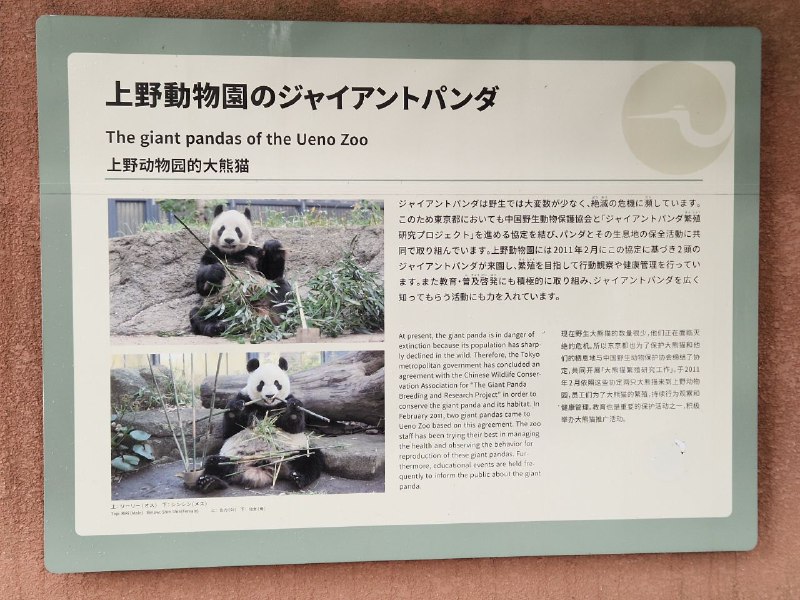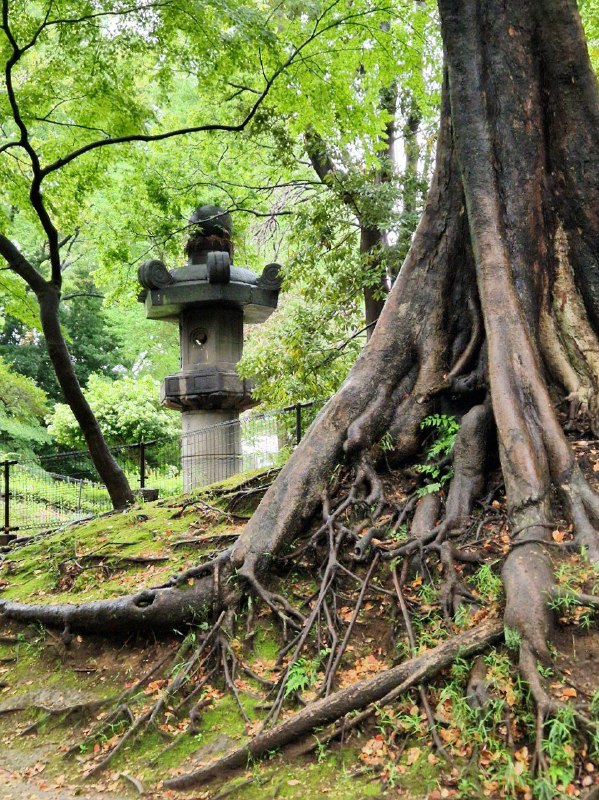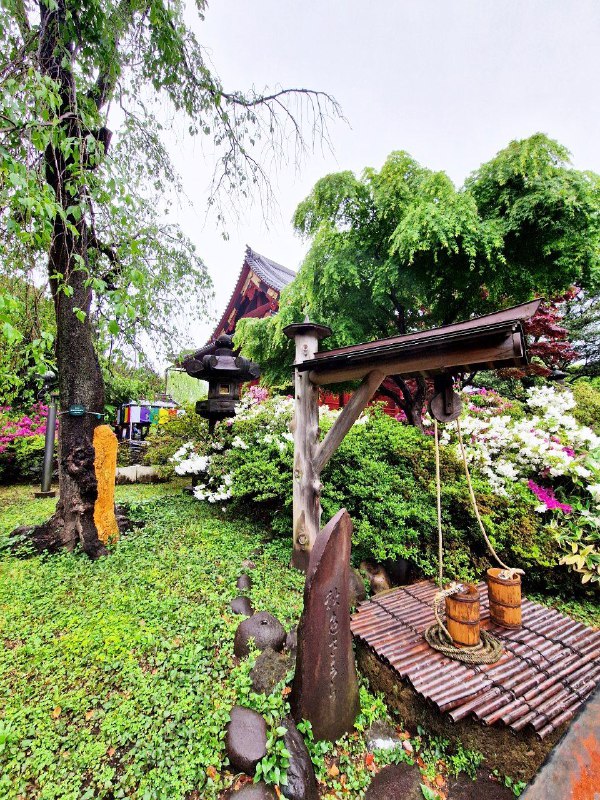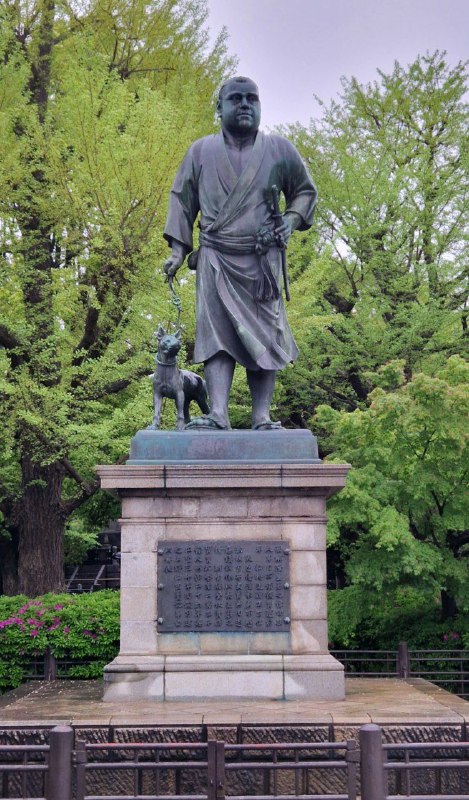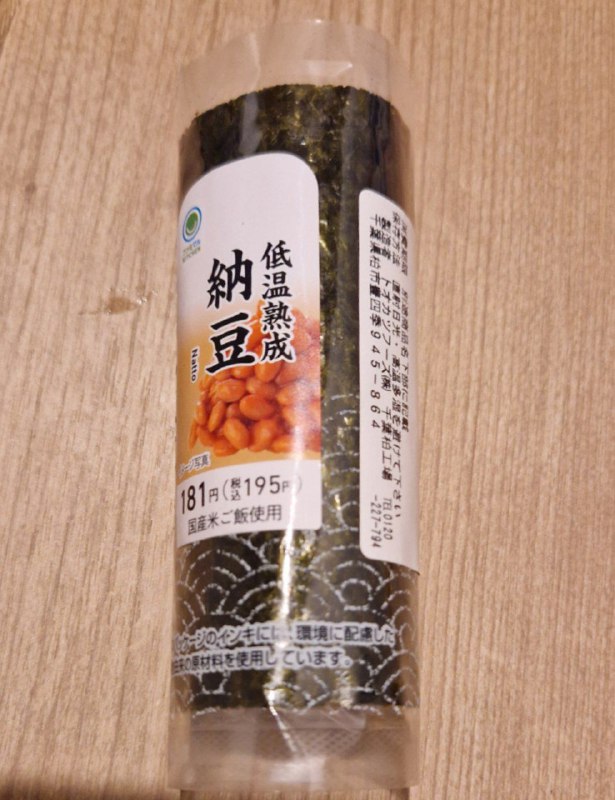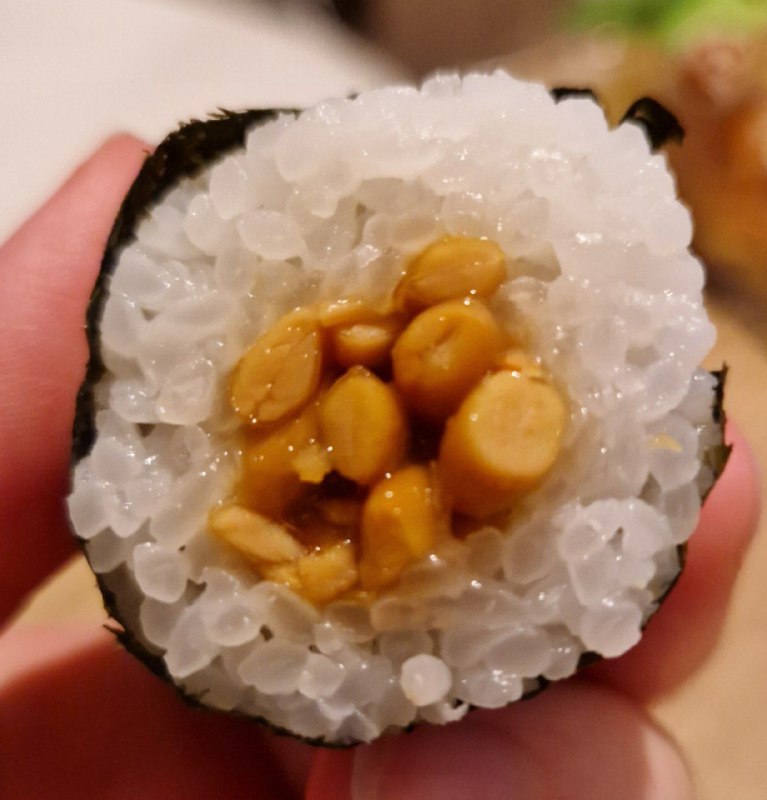Travelling in Japan is easy* with IC cards.
Suica (a pun on "Super Urban Integrated Card" and スイカ "watermelon") is
probably the most common card in Tokyo. It can be used as a payment form
in supermarkets and vending machines, too!
* Most regions allow interoperability between the IC cards, but some don't. For example, Kumamoto has its own IC card system that doesn't accept Suica, and Kagoshima just uses Visa (not master card!)
Why would we use a Suica to travel around Tokyo when we have a JR Pass? Well...
* Most regions allow interoperability between the IC cards, but some don't. For example, Kumamoto has its own IC card system that doesn't accept Suica, and Kagoshima just uses Visa (not master card!)
Why would we use a Suica to travel around Tokyo when we have a JR Pass? Well...
Because a JR pass is a tiny paper ticket that costs 100,000 yen, and it would be sad to lose (it probably can be replaced) (it cannot be replaced if lost or damaged)
We started our first full day in Tokyo with
going to Akihabara. I don't suppose the area needs an introduction, but
in case it does, here we go!
Akihabara is THE heart of the anime otaku culture in Japan.
It used to be a gate town next to Edo (central Tokyo, basically), then there was a massive fire, and then it somehow started to attract electronics sellers. After the WW2 it became known as Akihabara Electrics Town, a place you would go for your new vacuum cleaner or a radio. By the 80s, the area started catering towards emerging home computer enthusiasts, which suddenly blossomed into hobbyist-made adult video games in a certain graphics style. Doujin enthusiasts gathered around the area even in the 70s, and with this holy alliance the area began its transformation into an anime paradise. Moe (kyun~~)!*
"Moe" is a Japanese word for intense endearing towards characters and things.
"Kyun" is what your heart does when it *moe*-ing
Akihabara is THE heart of the anime otaku culture in Japan.
It used to be a gate town next to Edo (central Tokyo, basically), then there was a massive fire, and then it somehow started to attract electronics sellers. After the WW2 it became known as Akihabara Electrics Town, a place you would go for your new vacuum cleaner or a radio. By the 80s, the area started catering towards emerging home computer enthusiasts, which suddenly blossomed into hobbyist-made adult video games in a certain graphics style. Doujin enthusiasts gathered around the area even in the 70s, and with this holy alliance the area began its transformation into an anime paradise. Moe (kyun~~)!*
"Moe" is a Japanese word for intense endearing towards characters and things.
"Kyun" is what your heart does when it *moe*-ing
Radio Hall Building as seen in the Steins Gate anime, compare with the photo (the building has been rebuilt)
The radio town is still alive and kicking. You
can buy your electronic parts here, but it's usually cheaper to order
things online.
Anime shops are everywhere, and what's worse,
they're full of the characters you love (if you love anime). This place,
for example, is having a pop-up shop for the new film of Rascal Doesn't
Dream.
"okay, some tourists can have a bit of Ghibli as a treat, if they came to Akiba without knowing what they're going to see" (upper right corner)
Arcades!
Animate, the anime shop with EVERYTHING. (10am is too early for Akiba, many places were still closed)
Maid& Cosplay Cafés is yet another part of
Moe and Akihabara culture. In a nutshell, Maid Café is a cafe with
waitresses dressed as maids. In cosplay cafés waiters and waitresses
would be dressed as anime characters, and sometimes could do little
theatrical things. We are yet to check one out.
Who are those cute anime characters? They're
heroines of "A certain scientific railgun" and "A certain magical
index". Why they're here? Because it's a pachinko house with games based
on these franchises. What's a pachinko? Uhhh...
Pachinko is a gambling machine similar to slot
machines in the West, but originating from pinball machines. It uses
steel balls as tokens, and shows cute animations during the game.
The word, "Pachinko", doesn't mean anything - just the sound the machine makes, "pachin", plus the ending "ko" that makes it sound like a thing. Compare with the word for the swings: "buranko"; "bura" for "swing" and "ko".
Pachinko lives thanks to a small legal loophole. Gambling is illegal, but getting small "prizes" in exchange for the tokens is allowed. Then the "prizes" can be sold in a building next door to cash the wins. (photo from the internets)
The word, "Pachinko", doesn't mean anything - just the sound the machine makes, "pachin", plus the ending "ko" that makes it sound like a thing. Compare with the word for the swings: "buranko"; "bura" for "swing" and "ko".
Pachinko lives thanks to a small legal loophole. Gambling is illegal, but getting small "prizes" in exchange for the tokens is allowed. Then the "prizes" can be sold in a building next door to cash the wins. (photo from the internets)
Let's see what we can find in the Radio KaiKan building...
Robots and models, and tools needed for their assembly
Beautiful and exorbitantly priced ball-jointed dolls...
A vending machine with Steins Gate themed ice cream ($20 per portion, no thanks)
And Dr Pepper, the beverage choice of the intellectuals. I am mad scientist, sunavabitch https://youtu.be/BYvhhMjW32k
yoshitoshi ABe posters spotted!!!
(ABe is the guy who created Serial Experiments Lain, Welcome to NHK, and many other cool things!) https://youtu.be/9p5qSLNPQCk
Our second target in Akiba is the arcades.
First, we've wasted much more many coins on the failed crane games than
we're ready to admit 😂
Then we finally reached the floor with the
machine we were looking for, Project Diva. It is an old machine, but is
The Machine with vocaloids. There are other machines with vocaloids, but
this is The Machine.
And finally we've enjoyed (seeing) some vintage arcade machines. One of them even has a 3.5" floppy drive for game saves.
Living in the arcades is not allowed, but if you still decide to do it, you can buy cup ramen from a vending machine.
The box with flames on the right is, of course, "burnable trash".
The box with flames on the right is, of course, "burnable trash".
Our third destination in Akihabara was Hard-off, shops with junk. Basically, a thrift shop for computers, electronics and hi-fi.
Because junk is treasure
There aren't that many cool junk things in
Akihabara anymore. The tourists would buy anything, including overpriced
stuff, so the shops now mostly stock common consoles and PC parts.
Finding something uniquely Japanese now requires buying on an auction,
or going to a specialist junk shop.
There ARE rare finds sometimes, for example, a
Japanese computer Sharp X68000 that is somewhat similar to Macintosh
Classic but runs its own Japanese software and isn't compatible with
anything
We've finished our shopping, had some vegan
shawarma (very Japanese thing to do, isn't it), and started walking
around the area. Among interesting things we've found an Alice in the
Wonderland concept cafe and an idol venue
Please don't let me have to explain who Japanese idols are, because I myself have no idea, I only know one thing...
Crossfield, the building of The Tokyo Anime Center
(And here is the same building as seen in the Stein's Gate)
Inari shrine in Akihabara is pretty. Inari? Shrine? Whaa...
Let's start with the "shrine"!
Japan is a multi-religion country. Moreover, most Japanese people revere multiple religions at once: Buddhism and Shintoism.
Buddhism is imported, and naturally has a lot to do with Buddhas (the guys who reached spiritual awakening). Buddhism doesn't have a God. Buddhists have temples, and there are many temples in Japan.
Shintoism ("the way of Gods") is a native Japanese religion, focused on harmony between the humanity, the nature and the spirits. The spirits are many, too many too count. Collectively the Gods of Shinto are called "eight million gods", but the number is chosen to represent this incountability in the human terms. Shinto have shrines, because the gods are ENSHRINED in there. The status of God can be reached by being a really good or important person; for example, Hokkaido has a shrine where the soul of the Emperor Meiji lives.
Buddhism is imported, and naturally has a lot to do with Buddhas (the guys who reached spiritual awakening). Buddhism doesn't have a God. Buddhists have temples, and there are many temples in Japan.
Shintoism ("the way of Gods") is a native Japanese religion, focused on harmony between the humanity, the nature and the spirits. The spirits are many, too many too count. Collectively the Gods of Shinto are called "eight million gods", but the number is chosen to represent this incountability in the human terms. Shinto have shrines, because the gods are ENSHRINED in there. The status of God can be reached by being a really good or important person; for example, Hokkaido has a shrine where the soul of the Emperor Meiji lives.
Inari is a collective of three to five gods who
are responsible for fertility and success in Shinto. There are some
30,000 and maybe even 40,000 shrines devoted to Inari.
Inari's animal of choice is a messenger fox, white kitsune. Foxes are sacred in Shinto as they hunt mice and protect rice and wheat. Some (many) Inari shrines are actually devoted to foxes, or, at least, to Inari taking a form of a fox.
There is a folk belief that inari abura-age, oil-fried tofu, was invented to replace oil-fried mice as a sacrifice and an offering to the Inari foxes. Oil-fried mice indeed used to be a real thing, but the historians reject the idea of the link between the two. One way or the other, oil-fried tofu is something often given to the shrine gods (kami), and is most commonly known as inari. Rice in inari, thus, is known as "inari zushi"
Inari's animal of choice is a messenger fox, white kitsune. Foxes are sacred in Shinto as they hunt mice and protect rice and wheat. Some (many) Inari shrines are actually devoted to foxes, or, at least, to Inari taking a form of a fox.
There is a folk belief that inari abura-age, oil-fried tofu, was invented to replace oil-fried mice as a sacrifice and an offering to the Inari foxes. Oil-fried mice indeed used to be a real thing, but the historians reject the idea of the link between the two. One way or the other, oil-fried tofu is something often given to the shrine gods (kami), and is most commonly known as inari. Rice in inari, thus, is known as "inari zushi"
Well, let's continue our walk!
The weather is kind today, and the rain is warm. The air is full of flowery aromas.
The weather is kind today, and the rain is warm. The air is full of flowery aromas.
An unexpected stop: a shop with a cute sign that says
A shop where you can make your own keyboard
A shop where you can make your own keyboard
It has a gacha with keycaps and keyswitches outside!
There are dozens of keyboard switches available. All of them are good, but Cherry MX2A is the sweetest of them all (fight me!)
There are many unique keycaps, including ecstatically adorable kittens and doggos
Tokyo around Akihabara and Ueno is full of small flat blocks and power lines.
Ueno is a neighborhood some 600 meters away
from Akihabara. A part of Shitamachi ("lower [Tokyo] town"), it was a
working class area where trains to Tokyo terminated. Now it houses the
finest culture venues, including the Tokyo National Museum, National
Museum of Science, National Museum of Western Arts, concert halls, and
the world famous Ueno Zoo.
Ueno Zoo is one of 25 zoos outside of China that has pandas. There are only two, but then a few other pandas living in Japan are actually just "visiting" from China for scientific research. The scientists are trying really hard to make the pandas breed!
Hence, pandas.
Ueno Zoo is one of 25 zoos outside of China that has pandas. There are only two, but then a few other pandas living in Japan are actually just "visiting" from China for scientific research. The scientists are trying really hard to make the pandas breed!
Hence, pandas.
Ueno is a house to a long shopping street,
AmeYoko. The name either means "Candy Alley" or "Amerika Alley" (selling
surplus army goods)
AmeYoko as seen in the anime Mitsuboshi Colors (the show is set in Ueno)
The shops stock everything from spices to sports clothing.
For example, Freak Market stocks unusual jackets
Of course, Ueno has its own Pachinko salon, with Neon Genesis Evangelion
All the museums and the zoo are placed inside the Ueno Park. The park is beautifully green.
It is adorably quirky, too.
Smoking is only allowed in a designated area.
Told ya, quirky
We sat at Shinobazu pond (which is far prettier
than a photo can show) and considered our options. We had very little
time and too many choices. Rain meant most people would choose a museum,
so we decided to go to the zoo!
The zoo actually shares the pond with the park. Cormorants cosily house on the pond's tiny islands
We were lucky to catch one of the pandas having
its long, very low calorie, dinner. Most of the zoo visitors watching
the pandas were middle and high school students, probably on their field
trips.
Ueno Zoo is tragically known for its fate
during the World War Two. It was impossible to keep the animals safe, so
they were killed; the elephants of the zoo were refusing to eat poison
and too big to be shot down, so they died from hunger.
Today the animals are well-fed, including the elephants (there will be no photos of elephants, as they were hiding from the rain in the stables).
Some of the animal enclosures are historic and too small for the animals, but the zoo is working on it.
Today the animals are well-fed, including the elephants (there will be no photos of elephants, as they were hiding from the rain in the stables).
Some of the animal enclosures are historic and too small for the animals, but the zoo is working on it.
The manul is just a baby cat, huh
Suricats are cautious
The zoo's restaurant has a wisteria pergola and
virtually no vegetarian food. We asked the staff at the information
kiosk about the vegan food, and they told us there is vegan soya meat
curry at one of the cafes, but it seems the cafe was closed today.
I'm sorry, I don't know what that is, I just thought it was pretty.
"This Thai Pavilion (Sala Thai) is a gift from
the Royal Thai Government to mark the 120th Anniversary of Diplomatic
Relations between Thailand and Japan on the 26th September 2007, and to
serve as a symbol of the close ties of friendship between the two
countries."
After speed-running the zoo, we returned to the Ueno park. It has so many shrines and temples...
This sakura and this well are over century old three hundred years old. There is a beautiful story about a haiku about it (!!) Here it goes:
> The Ueno park is where the Toeizan Kan’ei-ji temple used to be. This temple was cherished by the Tokugawa regime as its Bodaiji temple (*a temple where one’s family grave is built). The Kan’ei-ji was also a tourist resort that attracted many visitors all year round. Especially during the cherry blossom season, many traveled from the town of Edo and spent a day there. During one cherry blossom season, a 13 year old daughter of a confectionery store in Nihonbashi Koamicho visited there with neighborhood kids. The girl’s name was Oaki (*autumn). Oaki was admiring the beauty of a particular cherry blossom tree named Ohannya-zakura standing next to the Kiyomizudo hall when two artisan looking guys walked by. They seemed to be drunk. One of them stumbled and held onto the wall of a water well. The other wrapped his arm around him saying, “Whoa! Watch out!” and together they walked away. Seeing this, Oaki made a haiku that goes “watch out sakura by the side of a well for drunken visitors” (by Shushiki). Oaki’s haiku name was Shushiki (*autumn color). She had been the pupil of a haiku poet, Kikaku Takarai, since she was nine, and with him her talent grew. Oaki tied her haiku to the cherry blossom tree. Then she went back playing with other kids. Zasu (*supreme abbot), the top position of the Kan’ei-ji temple had been filled by the Emperor’s family for generations. Therefore they were usually educated in waka and haiku. In Ueno, everyone was welcomed to come up with poems about cherry blossoms and make them known by tying them to trees. Every evening, the temple workers would come and collect all the poems and haiku that were tied to the trees. Then, the collected works were read and evaluated by prince Rinno-ji. Though, most of them were not much of a poem anyway. One day, prince Rinno-ji came upon Oaki’s haiku… This is Oaki’s success story whose name was later given to the cherry blossom.
Source: https://olympictravel.co.jp/en/e-K08.html
> The Ueno park is where the Toeizan Kan’ei-ji temple used to be. This temple was cherished by the Tokugawa regime as its Bodaiji temple (*a temple where one’s family grave is built). The Kan’ei-ji was also a tourist resort that attracted many visitors all year round. Especially during the cherry blossom season, many traveled from the town of Edo and spent a day there. During one cherry blossom season, a 13 year old daughter of a confectionery store in Nihonbashi Koamicho visited there with neighborhood kids. The girl’s name was Oaki (*autumn). Oaki was admiring the beauty of a particular cherry blossom tree named Ohannya-zakura standing next to the Kiyomizudo hall when two artisan looking guys walked by. They seemed to be drunk. One of them stumbled and held onto the wall of a water well. The other wrapped his arm around him saying, “Whoa! Watch out!” and together they walked away. Seeing this, Oaki made a haiku that goes “watch out sakura by the side of a well for drunken visitors” (by Shushiki). Oaki’s haiku name was Shushiki (*autumn color). She had been the pupil of a haiku poet, Kikaku Takarai, since she was nine, and with him her talent grew. Oaki tied her haiku to the cherry blossom tree. Then she went back playing with other kids. Zasu (*supreme abbot), the top position of the Kan’ei-ji temple had been filled by the Emperor’s family for generations. Therefore they were usually educated in waka and haiku. In Ueno, everyone was welcomed to come up with poems about cherry blossoms and make them known by tying them to trees. Every evening, the temple workers would come and collect all the poems and haiku that were tied to the trees. Then, the collected works were read and evaluated by prince Rinno-ji. Though, most of them were not much of a poem anyway. One day, prince Rinno-ji came upon Oaki’s haiku… This is Oaki’s success story whose name was later given to the cherry blossom.
Source: https://olympictravel.co.jp/en/e-K08.html
Apparently, the poem was written in 1681:
"Cherry blossoms near a well are in danger from drunken comrades" ( Idobata no sakura abunashi sake no yoi ).
"Cherry blossoms near a well are in danger from drunken comrades" ( Idobata no sakura abunashi sake no yoi ).
The final sight for the day is the statue of
Saigo Takamori, a Japanese tragic hero and one of the last samurai. He
was a bureaucrat during the Meiji restoration. The government decided
that the samurai will all retire, which was fine by him, but the
government got nervous and tried to attack the samurais. Upset but true
to his ideals, Saigo led a rebellion against the government, and died in
the battle. The government won, and the samurais were no more, but the
government has lost so much in the war it had to restructure everything.
The government recognised its own mistakes and pardoned Saigo shortly
after.
I have no idea whether his dog was fine after the war or not.
I have no idea whether his dog was fine after the war or not.
Fun
note: Saigo refused to have a photograph taken, so we have no idea how
he looked like. He's a popular historical figure, and there are many
ways to portray him: https://threestepsoverjapan.blogspot.com/2018/02/the-many-faces-of-saigo-repost.html
That was all for the day. Writing the notes and
going over the photos took me three hours, but I'm sure I'll be
grateful to myself for doing this. But I'm not sure if I can keep up
with this pace on a daily basis :D
The final note of the day: on natto and glycine
Natto is a dish made of slightly rotten soya
beans. They're not rotten enough to become tofu (plus I bet there are
some extra secrets to make tofu out of beans), but they are rotten
enough to smell like cheese with mold. Most westerners are repulsed,
not by the smell but the texture - it's slimy with cheesy streaks.
I had had a natto toast before, and I think it tasted slightly worse than a Vegemite toast (that's not a praise!). Natto roll, however, is much more pleasant. Most of the slimey-ness is hidden by the stickiness of the rice, so it tastes quite similar to a roll with cheese. I have to admit, it is still not my favourite.
I had had a natto toast before, and I think it tasted slightly worse than a Vegemite toast (that's not a praise!). Natto roll, however, is much more pleasant. Most of the slimey-ness is hidden by the stickiness of the rice, so it tastes quite similar to a roll with cheese. I have to admit, it is still not my favourite.
Reading the ingredients of the roll I noticed
that it lists glycine. In fact, most onigiri and, well, most foods we've
had here had glycine in the ingredients list. Glycine is an amino acid
that is sometimes used as nootropics.
However, it is also a food preservative, and it tastes like a combination of sweet and umami! That is why, supposedly, the glycine is the most common food preservative in Japan. It doesn't seem like other countries are following the suit; US has banned glycine as a preservative back in 1971.
Japanese researches, however, insist that glycine in foods keeps everyone healthier. Must be one of those Japanese things, huh.
However, it is also a food preservative, and it tastes like a combination of sweet and umami! That is why, supposedly, the glycine is the most common food preservative in Japan. It doesn't seem like other countries are following the suit; US has banned glycine as a preservative back in 1971.
Japanese researches, however, insist that glycine in foods keeps everyone healthier. Must be one of those Japanese things, huh.
